Smoke from the huge fires in Oregon and Washington was making southern BC rather unpleasant and at times downright unhealthy. We had booked much earlier to go up with the Cathedral Lodge transport – so we decided to go anyway and we were really glad we did. This was our fifth (Andrea) and fourth (Alan) trip to Cathedral Park, and as usual we camped in the lovely Quinisco Lake campsite. This is very convenient for “luxury” camping, meaning that we only have to carry all our gear 300 m from the lodge and can take a big cooler and two-burner cookstove etc.
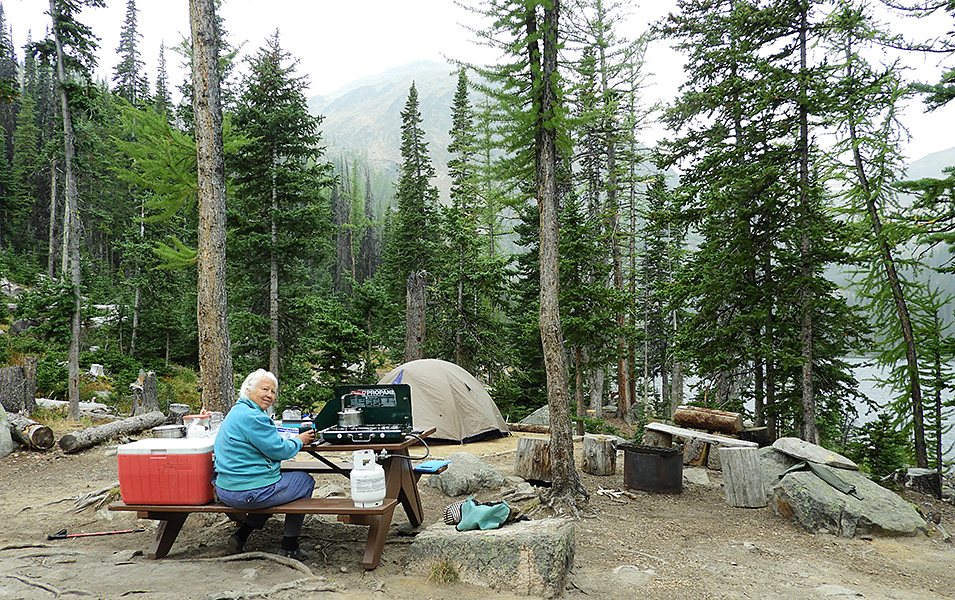
Camping at Quinisco Lake, Cathedral Park. The smoky conditions caused many people to cancel their visits, so the campsite was very quiet and peaceful all week.
On our first morning, 15 September, we awoke to drizzle. But this soon cleared and the rest of the day was beautiful, warm and sunny. The rain had cleared away the high elevation smoke.
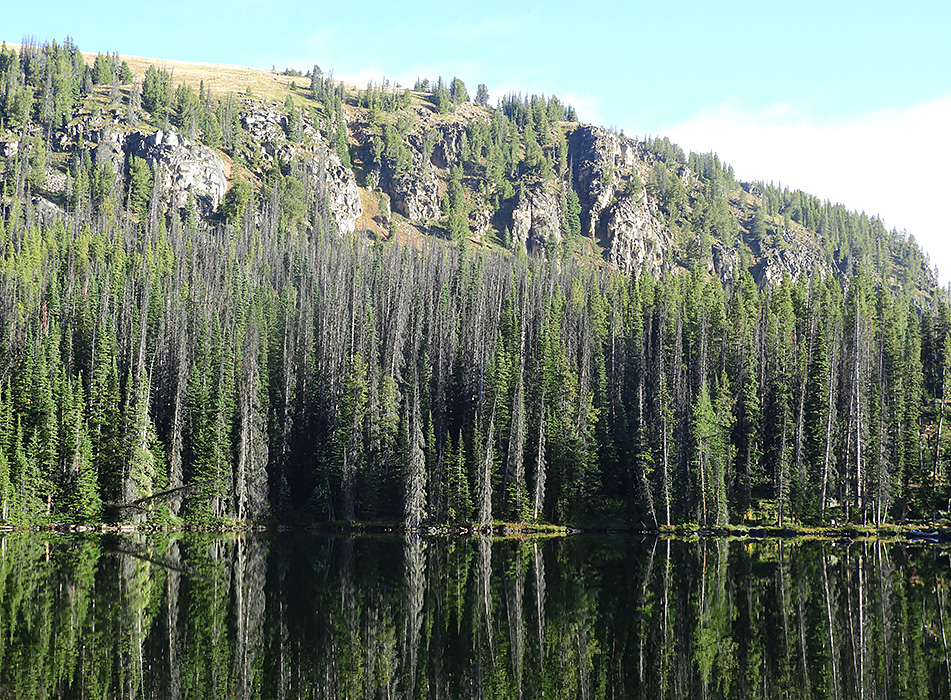
Sunshine and blue skies on our first morning at Quinisco Lake.
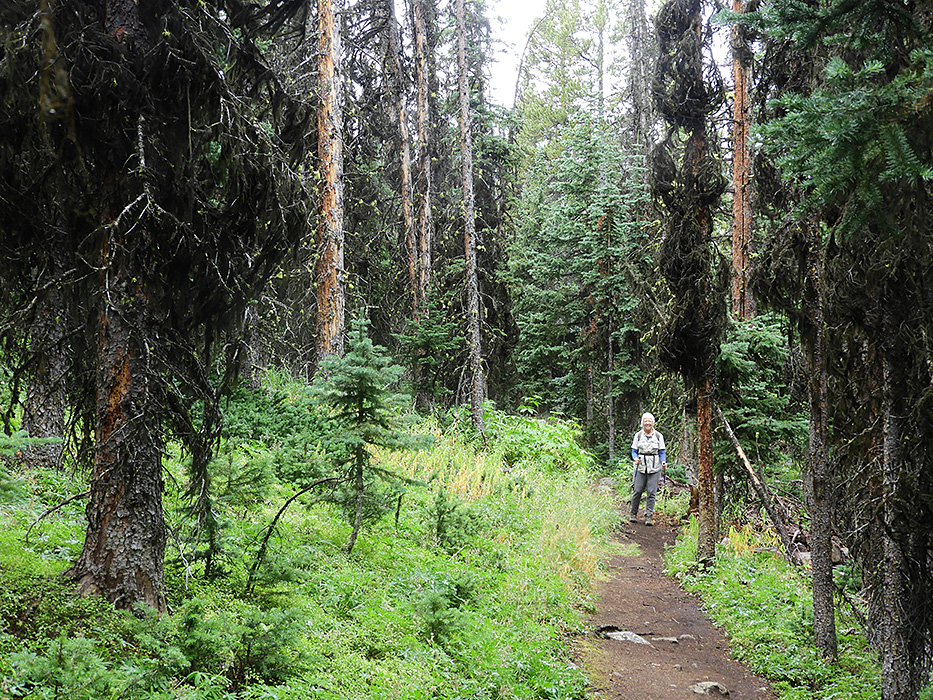
Hiking the trails in the lower spruce forest. Unfortunately many of the older spruce trees were killed some years ago during an outbreak of spruce bark beetle.
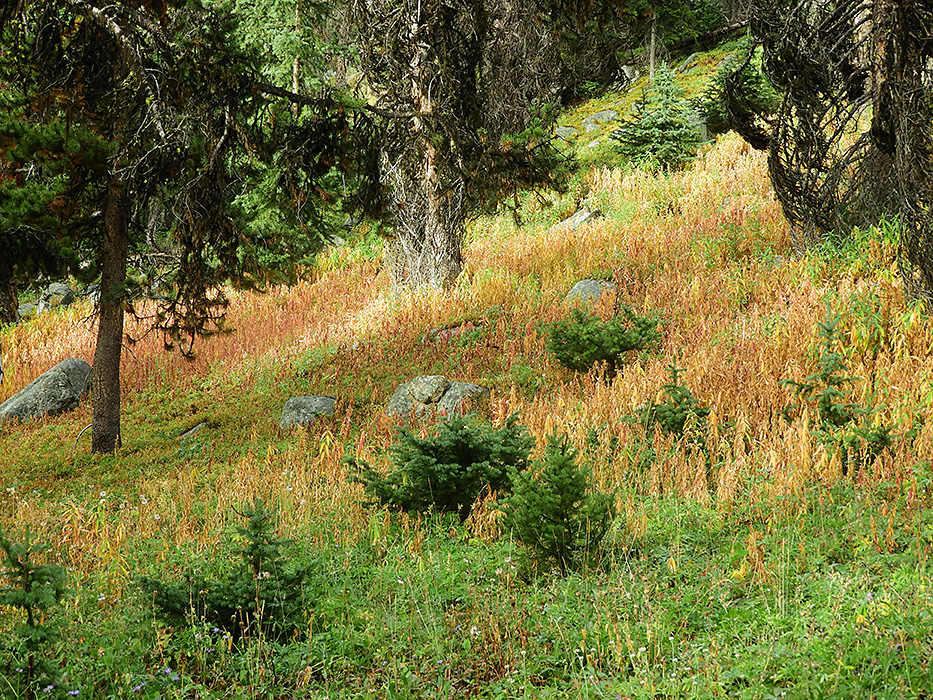
Early autumn brings lovely colours to many plants – here mainly fireweed.
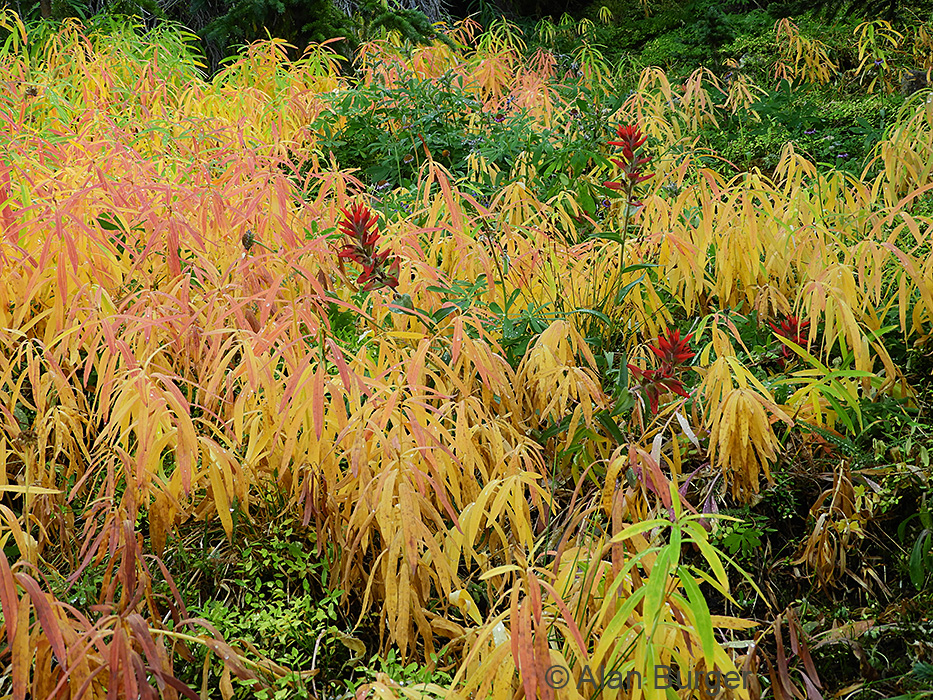
Dying fireweed and blooming Paintbrush make a colourful carpet in open forest glades.
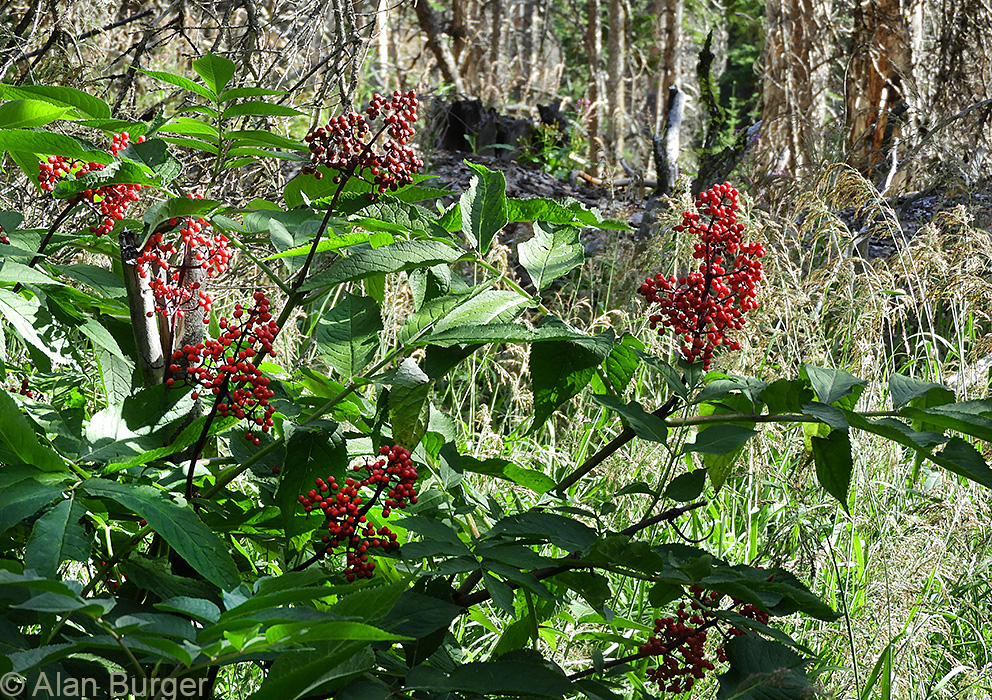
Fall is also the time for berries – here Red Elderberry (Sambucus racemosa).
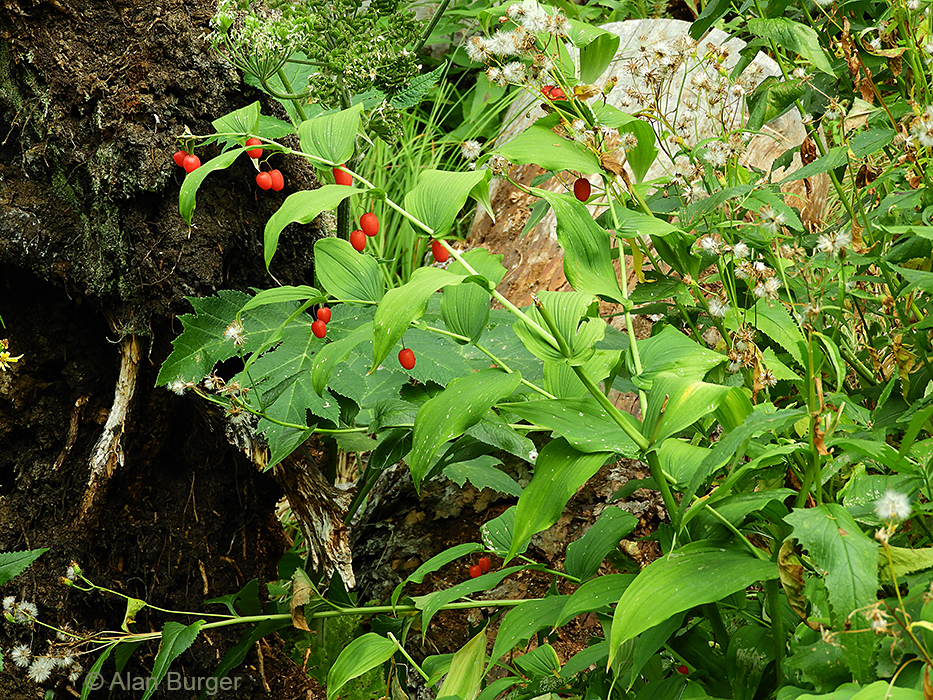
Along the streams there were many Rosy Twistedstalk (Streptopus roseus) with their bright red berries.
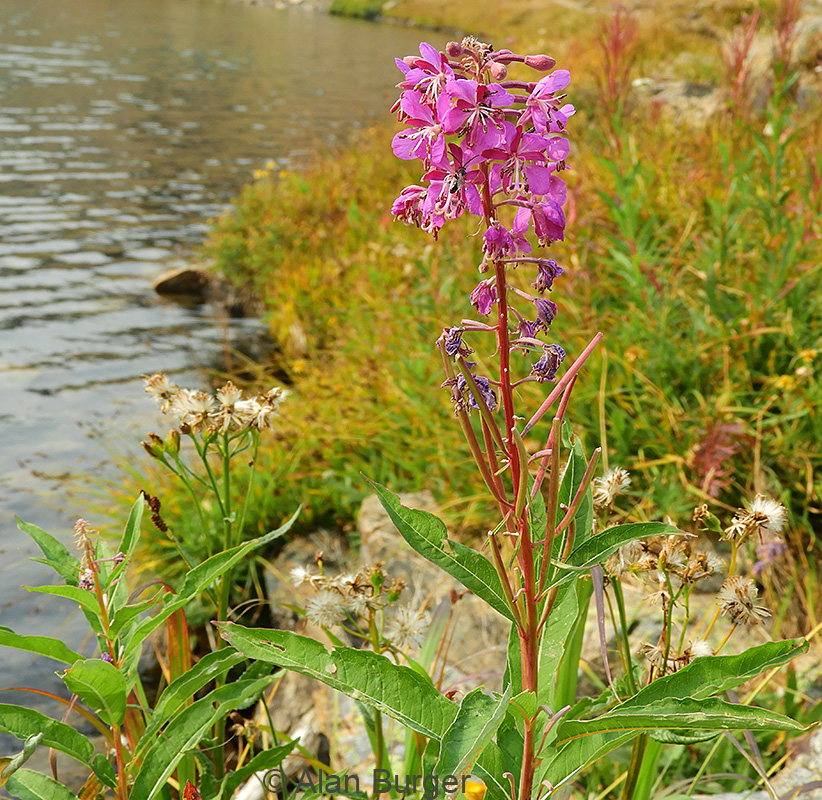
A late-blooming fireweed (Epilobium angustifolium)
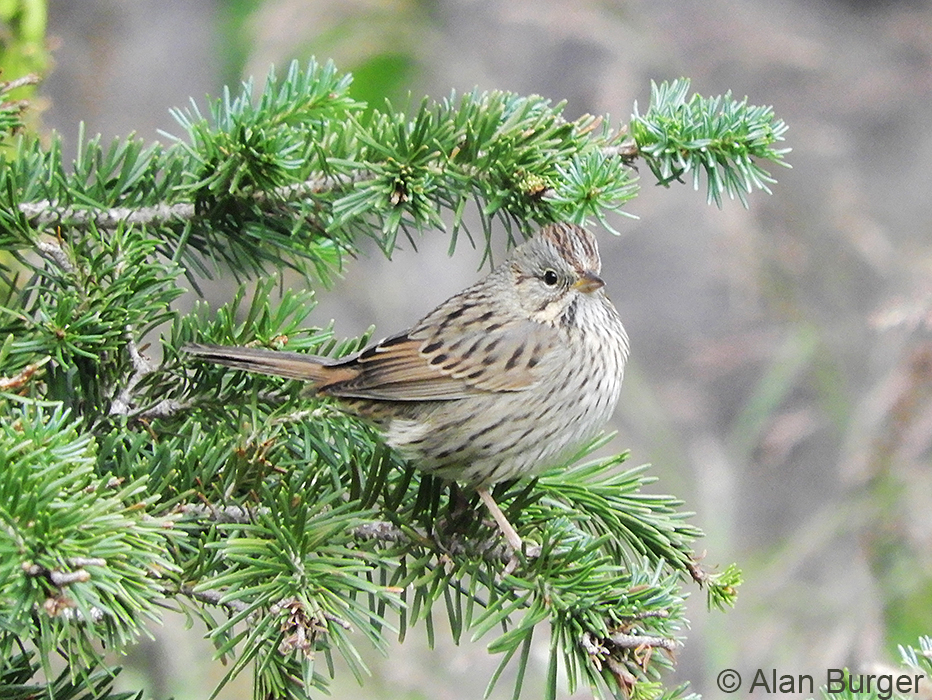
We encountered several Lincoln’s Sparrow in the forest.
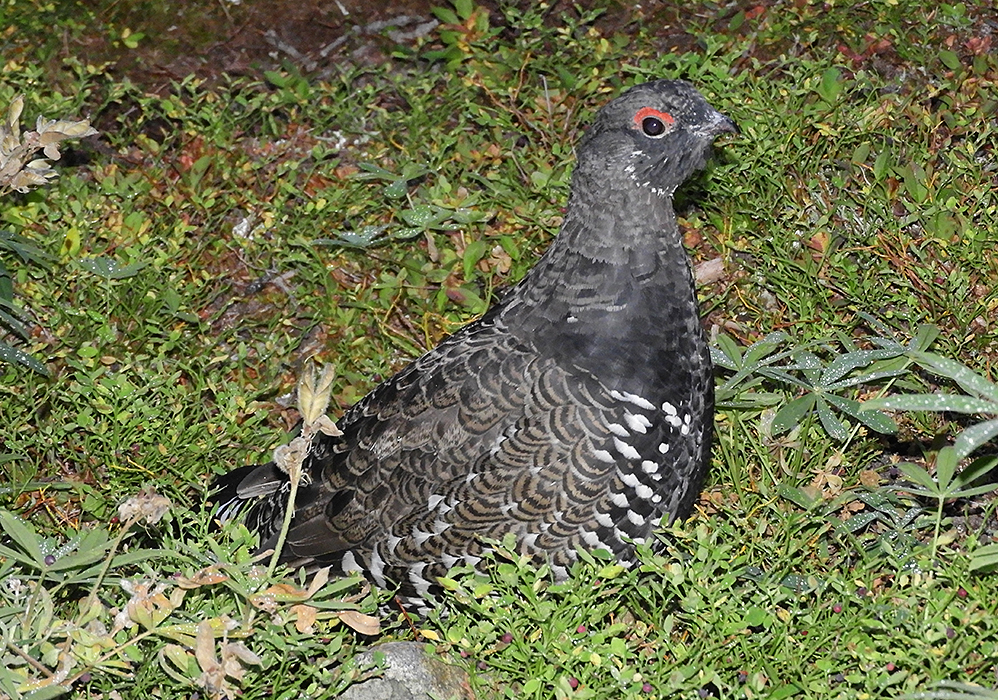
Cathedral Park is a great place to see Spruce Grouse. I found this male on our first morning in the forest.
One reason for visiting Cathedral Park in early fall is to experience the glorious golden vistas as the Larch trees change colour and start shedding their leaves. Larches are one of the few conifers that are deciduous, and they are the dominant tree in the sub-alpine forests – at higher elevations than the spruce forests. Before our visit there had been relatively little frost so many of the larches were only just starting to change colour – but we still enjoyed some beautiful patches of gold.
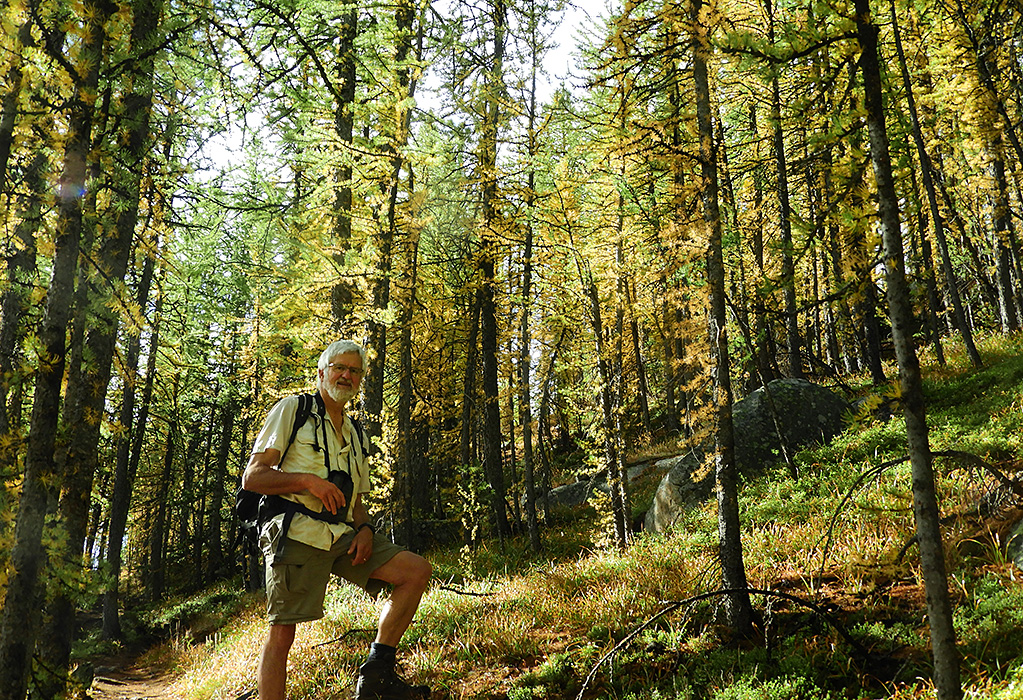
Alan in the larches on the Diamond Trail – 15 September 2020.
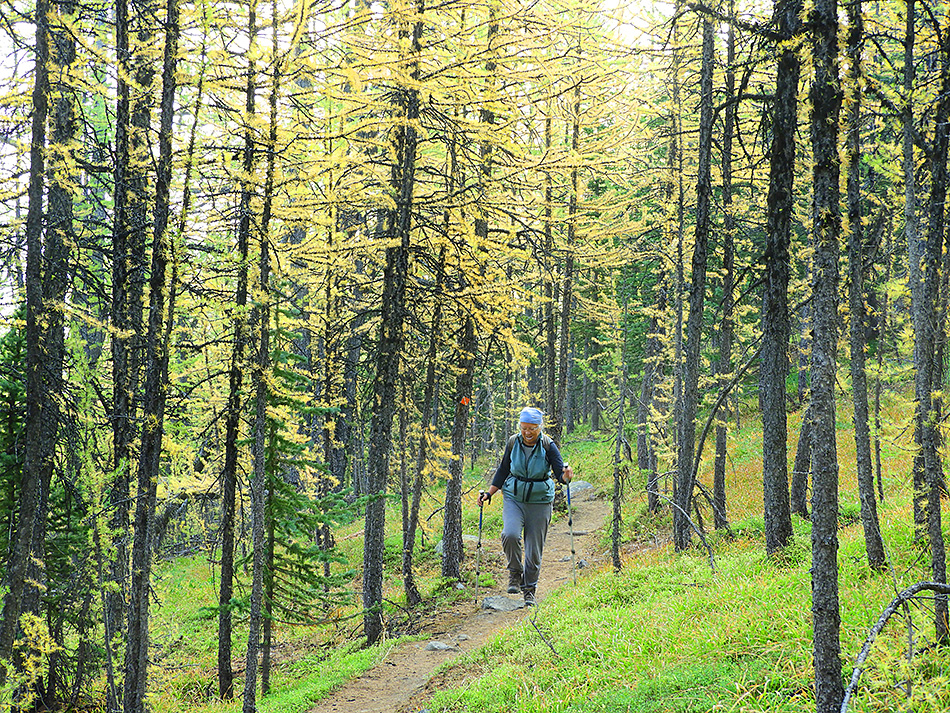
Andrea in the larches on the trail from Quinisco to Glacier Lake – 17 September 2020.
Another primary reason for hiking in Cathedral Park is the easy access to the alpine areas (relatively speaking, of course, it is still an uphill slog!). On our first day of hiking we did the Diamond Trail which gives an amazing variety of scenery and habitats.
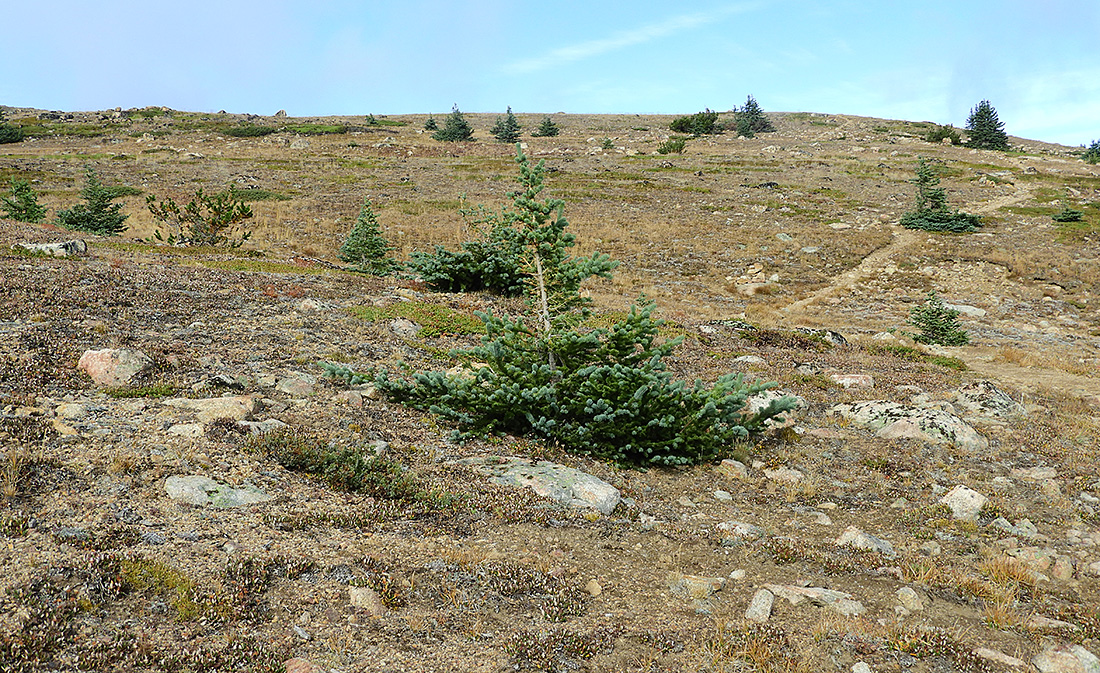
Sparse vegetation on the exposed slopes leading up to Red Mountain.
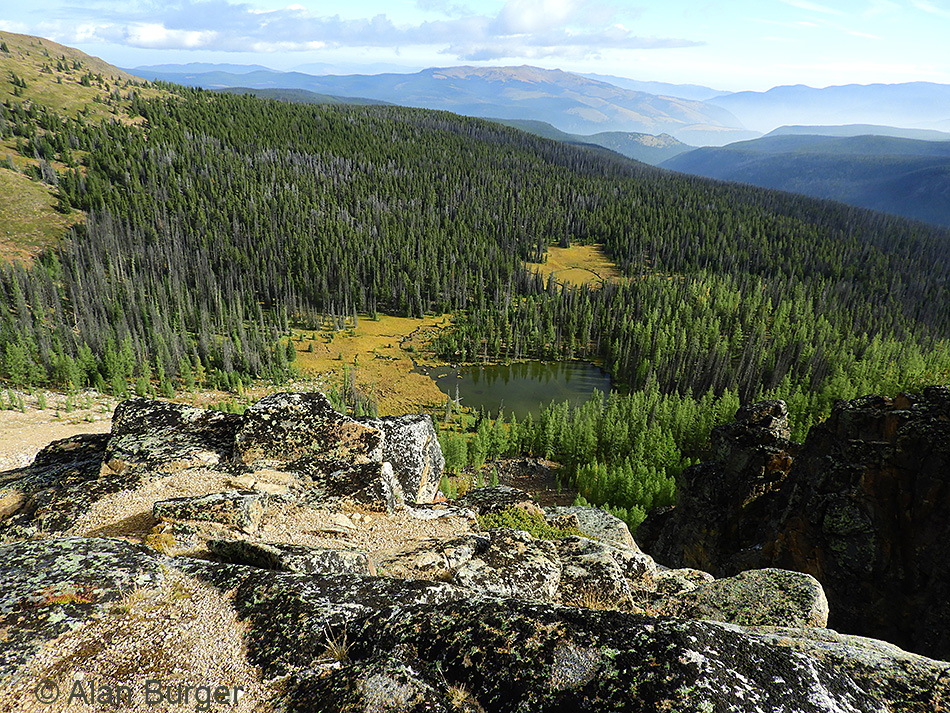
Looking down at Scout Lake from the Diamond Trail. Notice the smoke in the valleys while we are enjoying clear air and sunshine in the high elevation. 15 September 2020
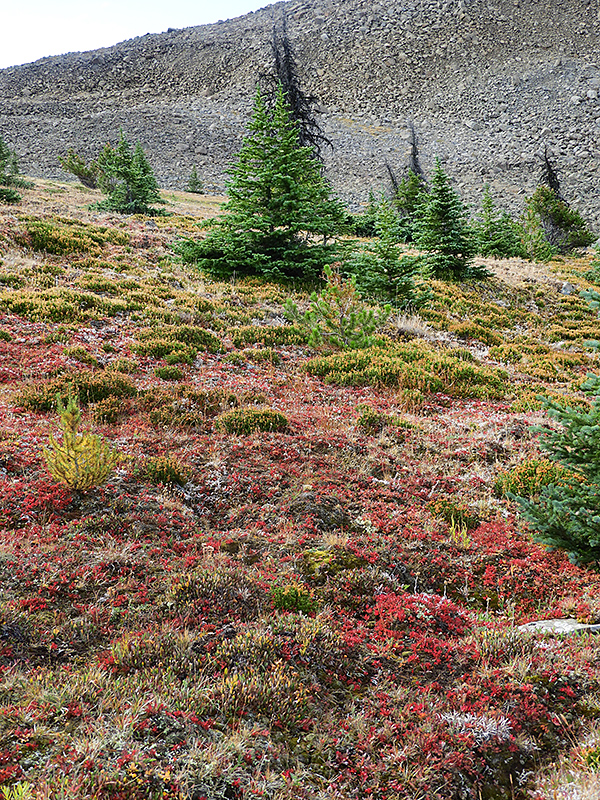
Fall colours in the alpine shrubs.
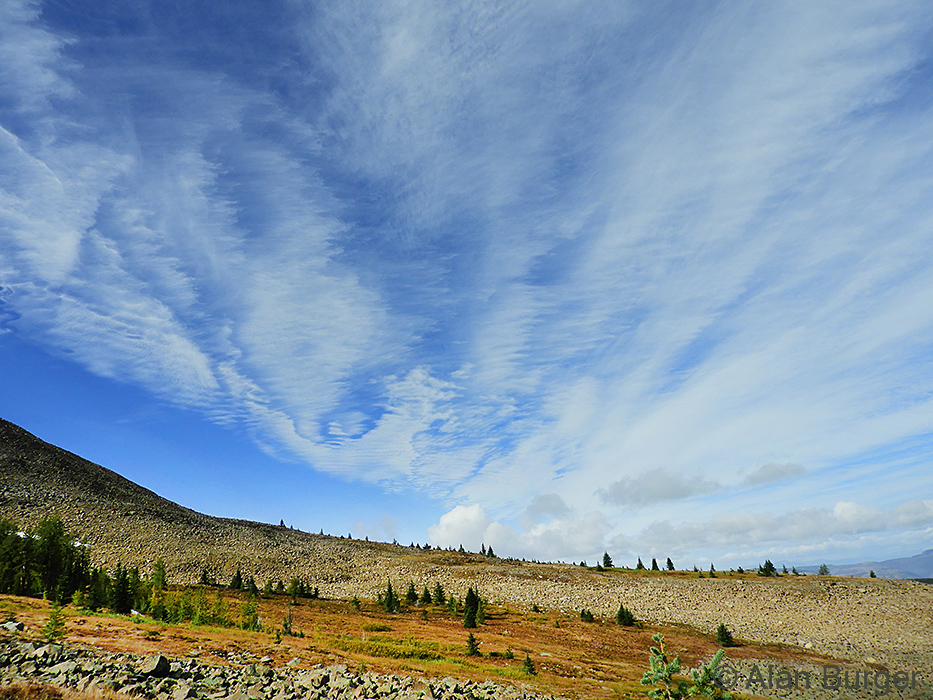
On the alpine portion of the Diamond Trail we enjoyed spectacular cloud formations that changed by the minute.
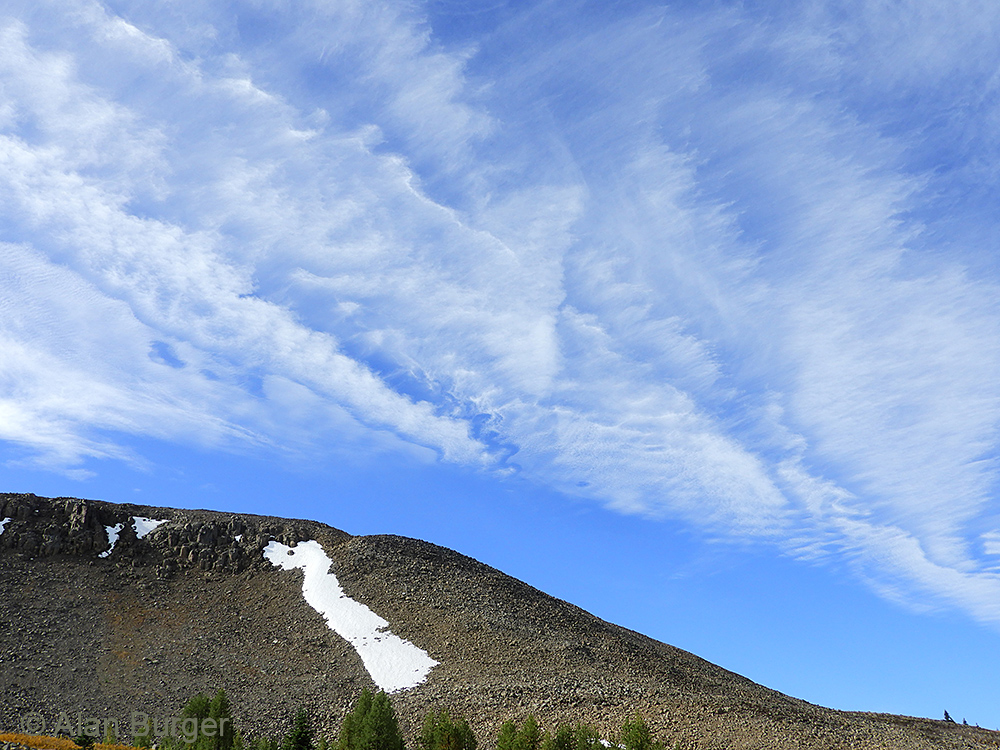
More interesting cloud formations.
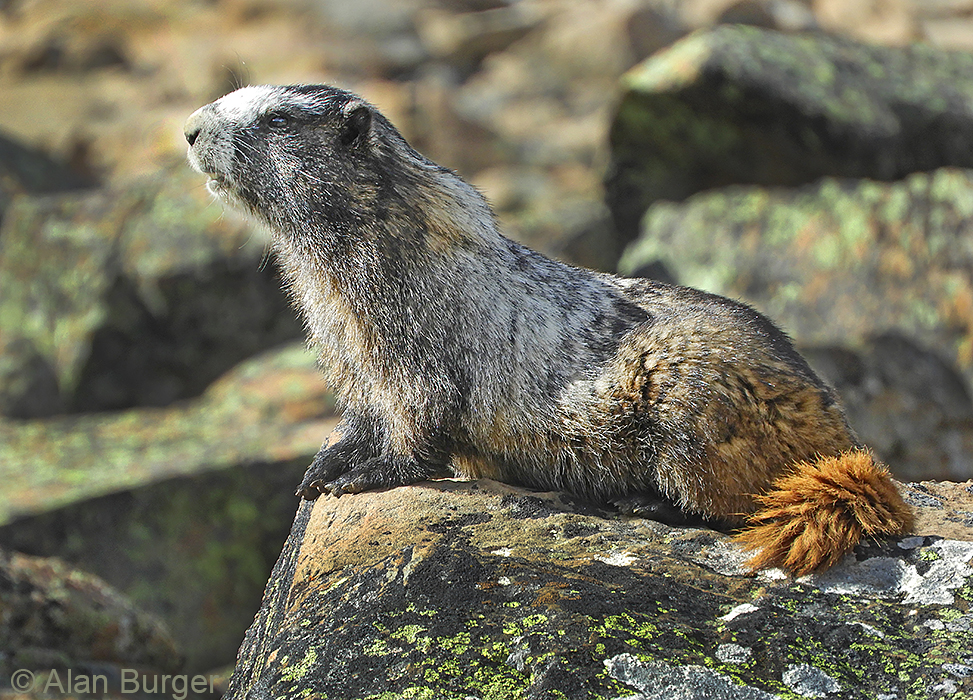
Hoary Marmots were preparing for their long winter hibernation. Many that we saw were very fat but were still guzzling down huge amounts of leafy vegetation.
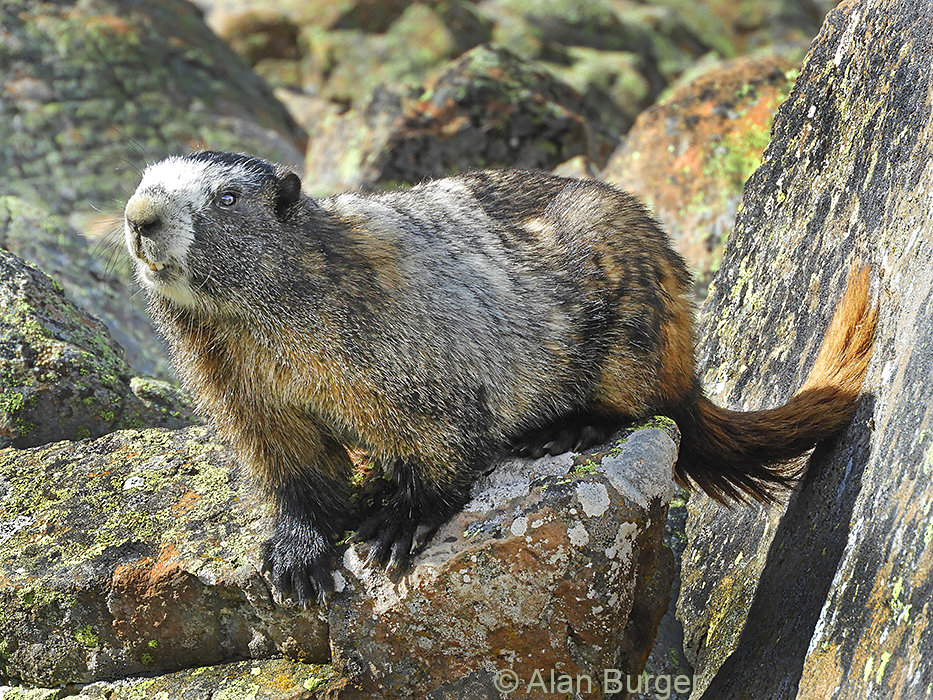
A Hoary Marmot among the rocks where it will find a cozy den to hibernate all winter.
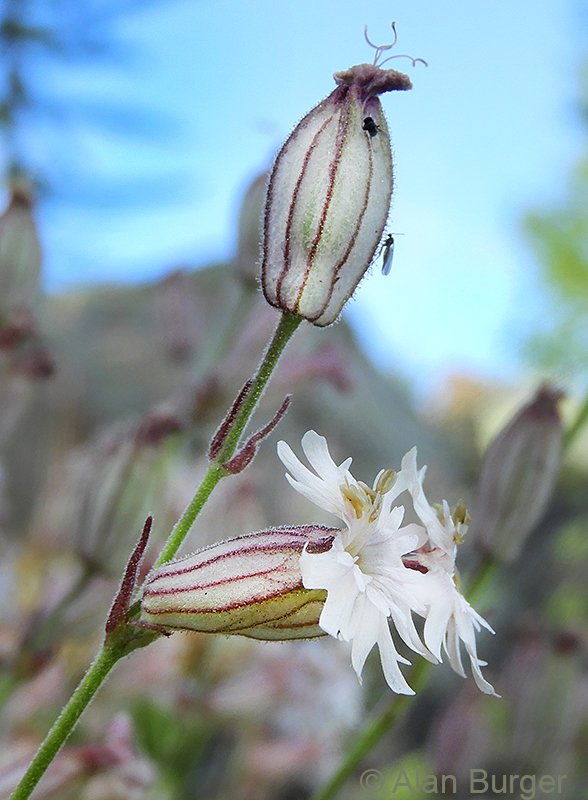
A close-up view of a catchfly bloom, probably Parry’s Campion (Silene parryi). The name “catchfly” refers to the sticky glandular hairs that members of this genus often have – these will sometimes entrap small insects. Notice the tiny flies sitting on the flower.
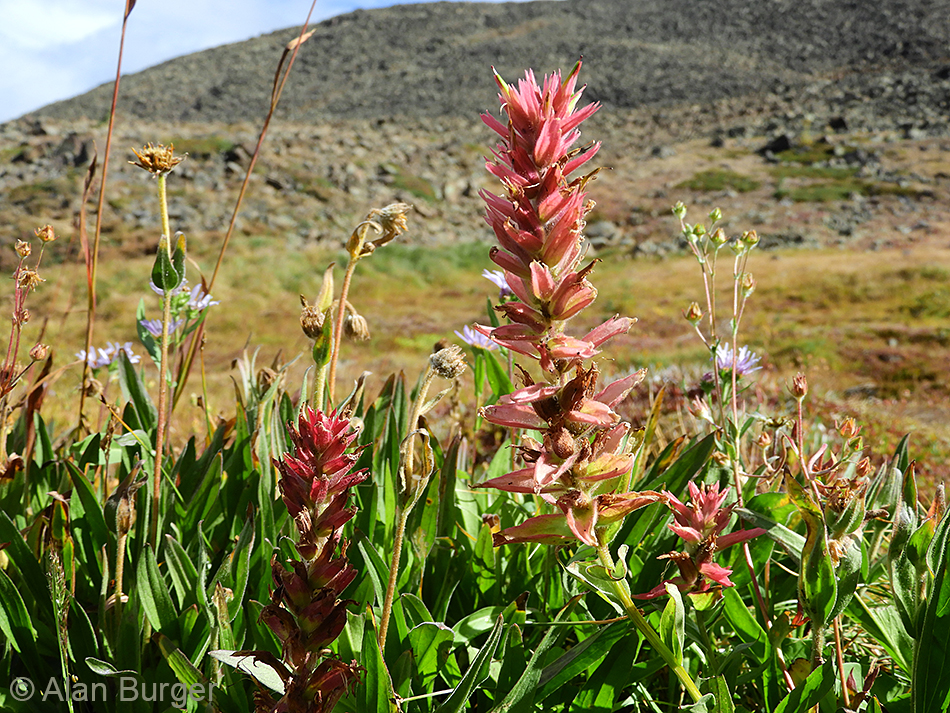
Paintbrushes (Castilleja spp.) are notorius for hybridizing and being difficult to identify to species. This is probably Cliff Paintbrush (C. rupicola), or maybe the widespread Scarlet Paintbrush (C. minuata). Or maybe a hybrid?
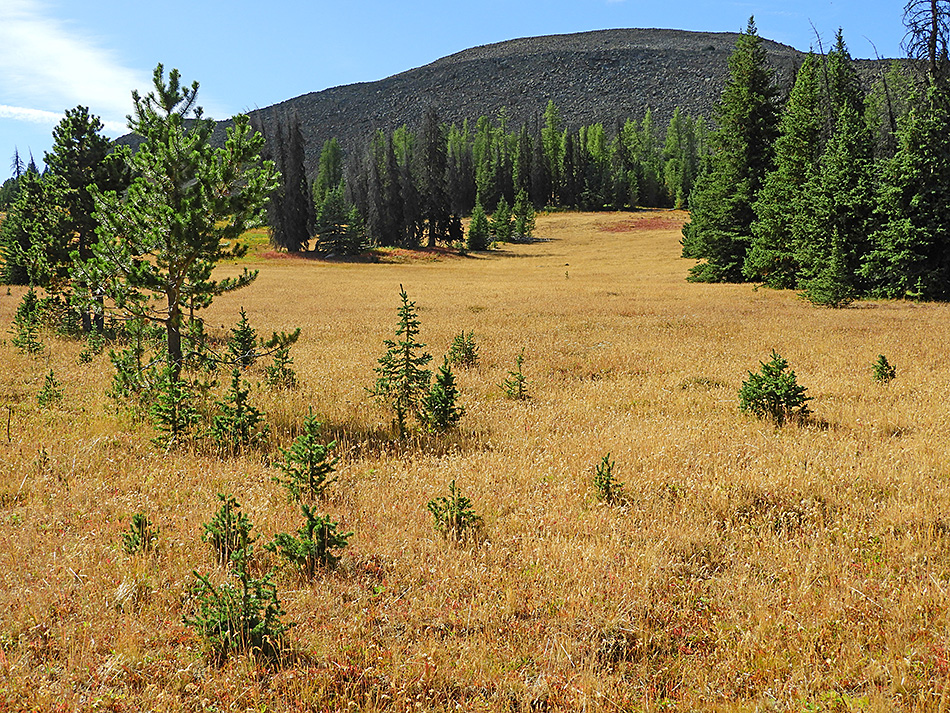
Grassy sub-alpine meadows turning golden as fall approaches.
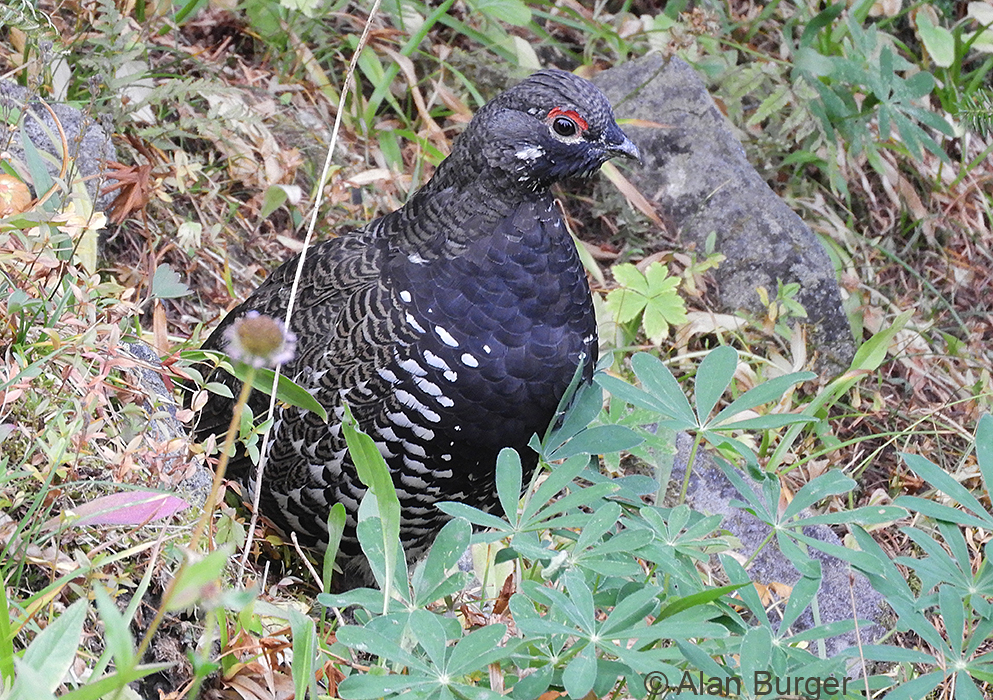
Another male Spruce Grouse in the forest near Quinisco Lake.
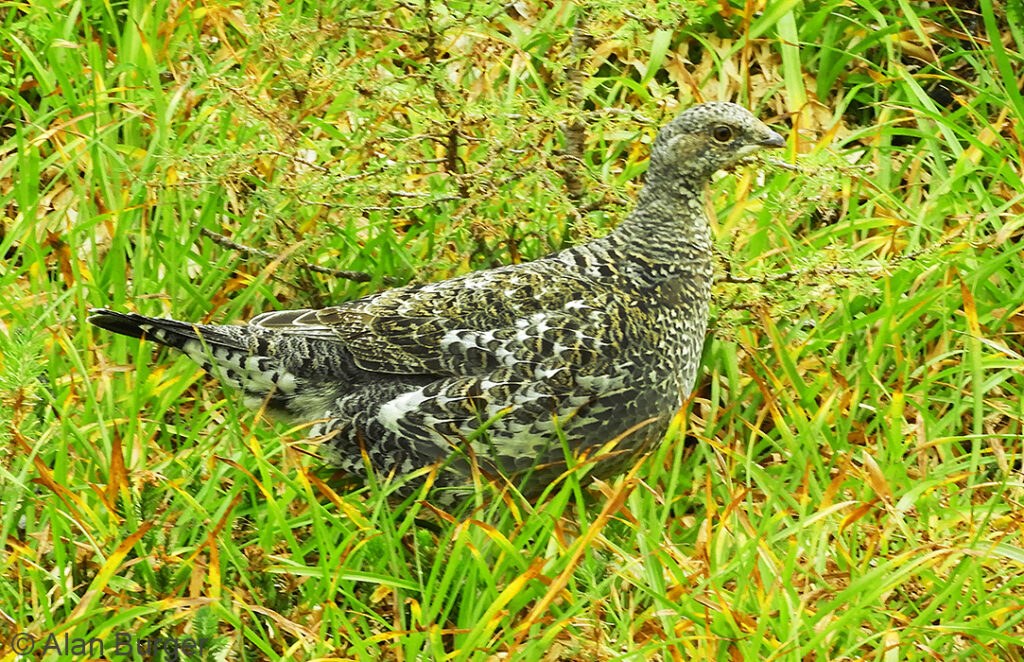
A female Spruce Grouse.
On our second morning the smoke unfortunately returned, but at our elevation it was only a moderate amount, unlike in the valleys below, so we still did lots of great hiking – including the wonderful Rim Trail which runs above 2400 m for much of its length.
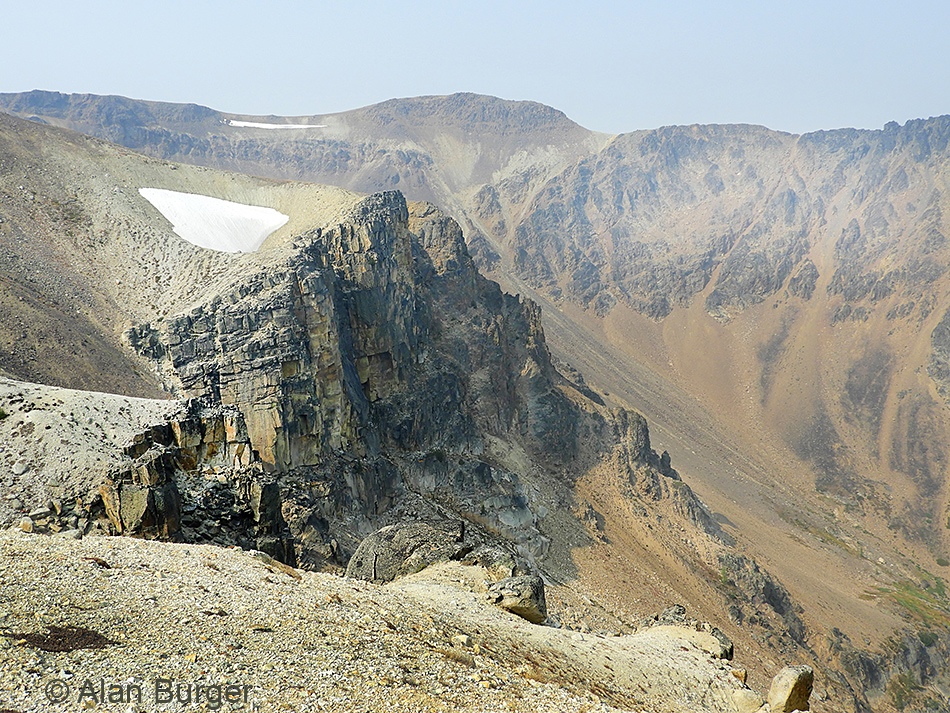
A view along the high elevation Rim Trail. Easy hiking (once one reaches the rim) with spectacular scenery.
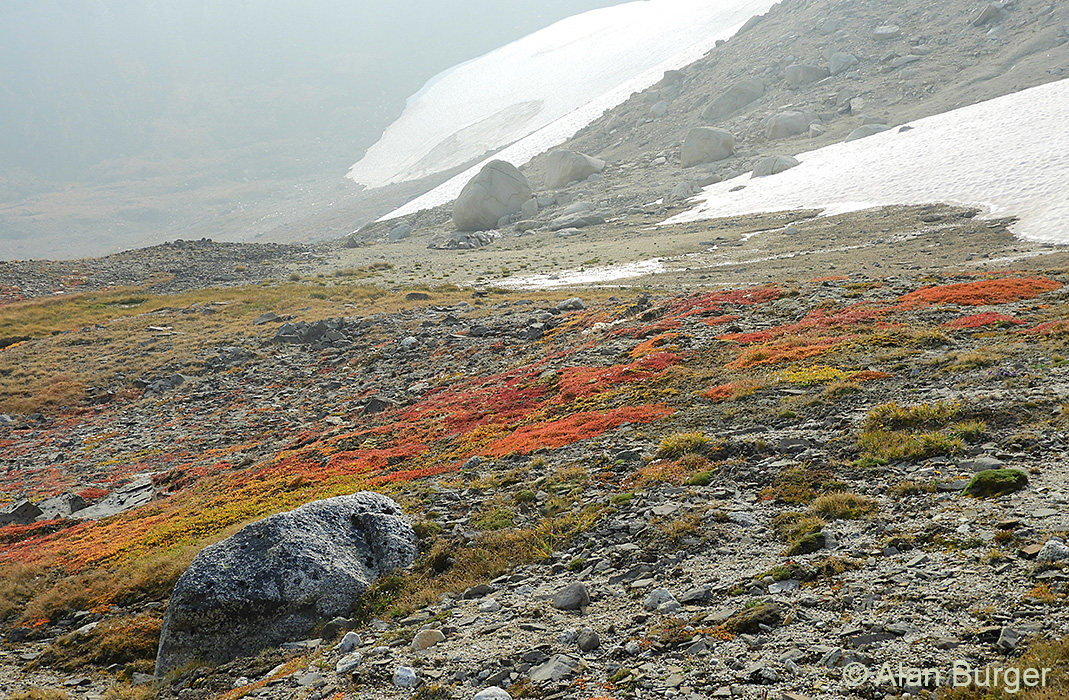
High alpine shrubs on the Rim Trail.
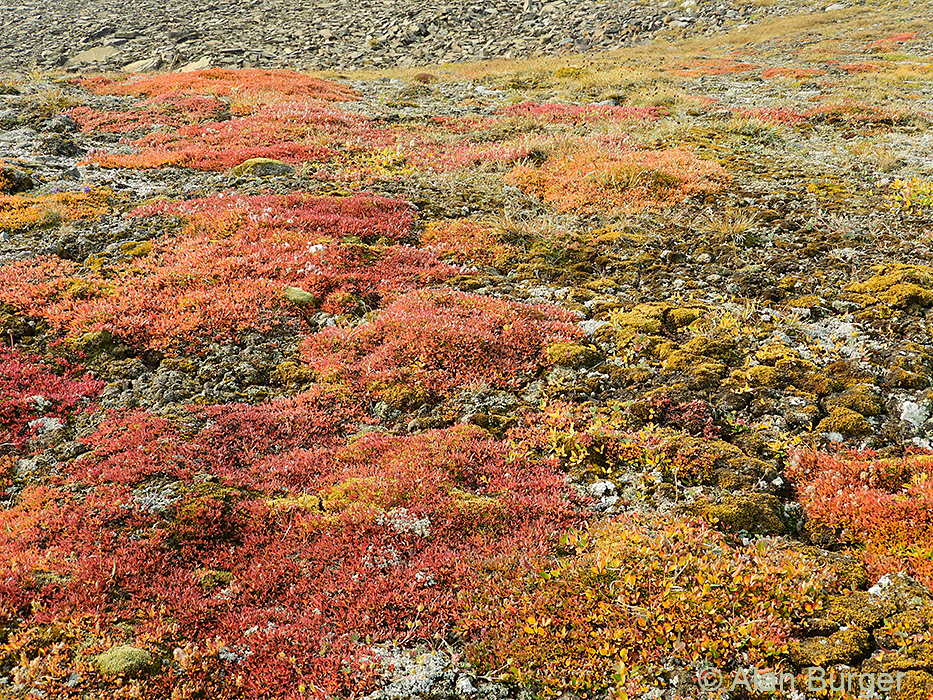
Stunted shrubs – mainly blueberry, mountain avens and dwarf willows – give spectacular fall colours.
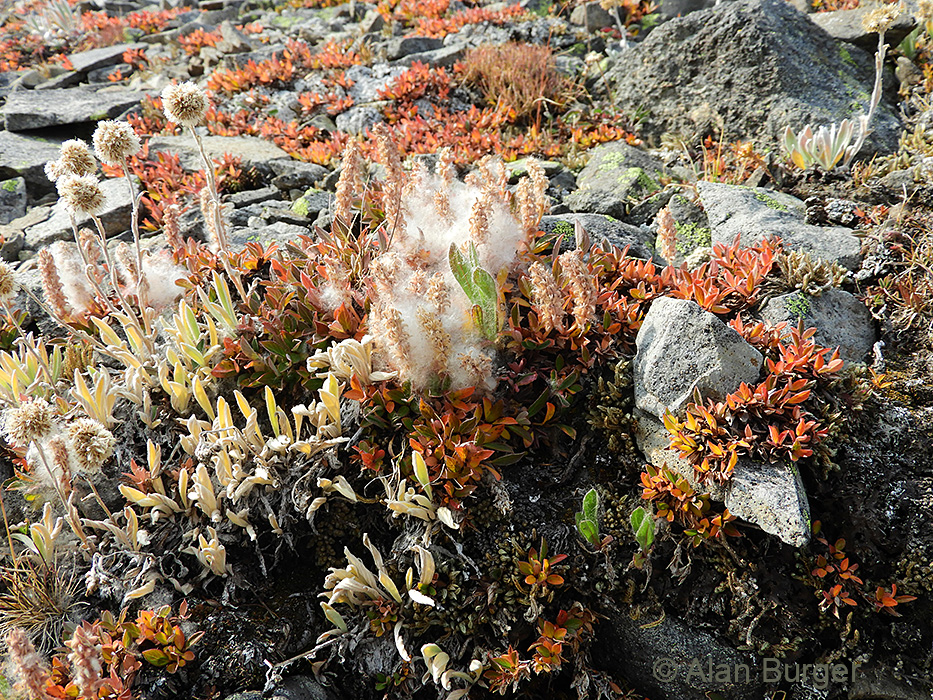
The seeds of Arctic Willow (Salix arctica) are shed in cotton-like masses, as the leaves turn red.
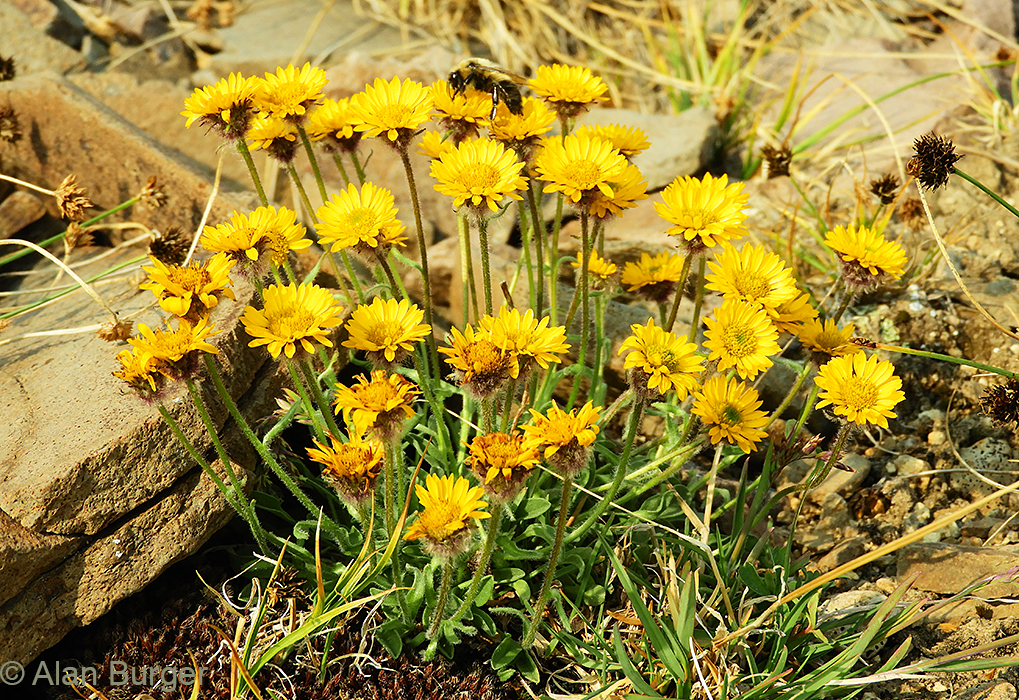
In sheltered areas there were still many alpine flowers blooming – Golden Fleabane (Erigeron aureus). Note the bumblebee doing its pollination duties.
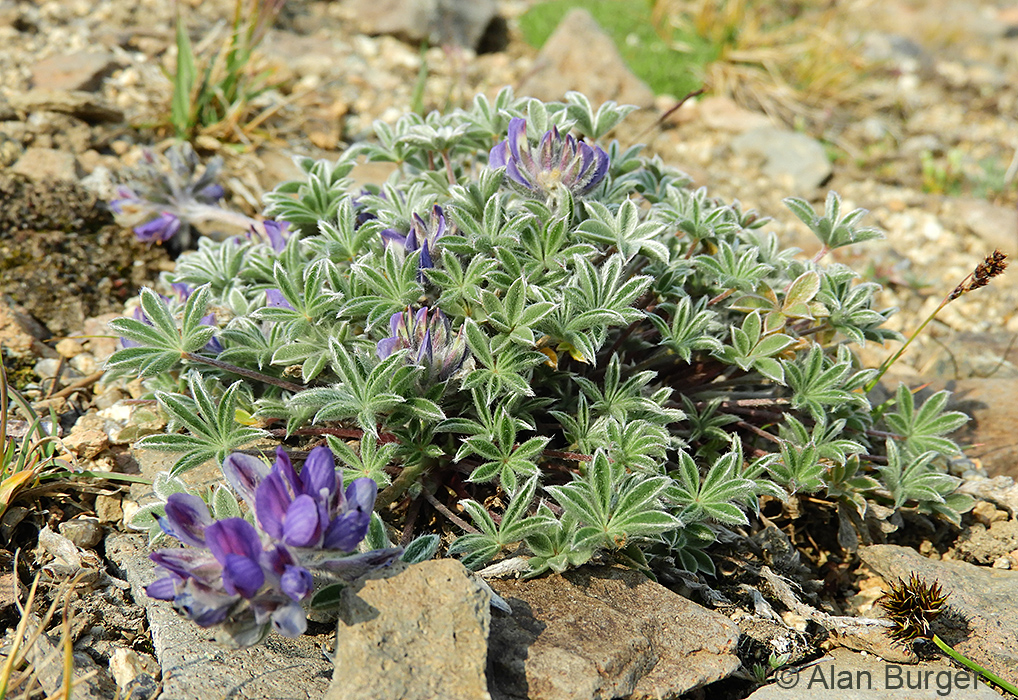
Alpine Lupine (Lupinus lyalli) thrives in the rugged gravelly high alpine areas.
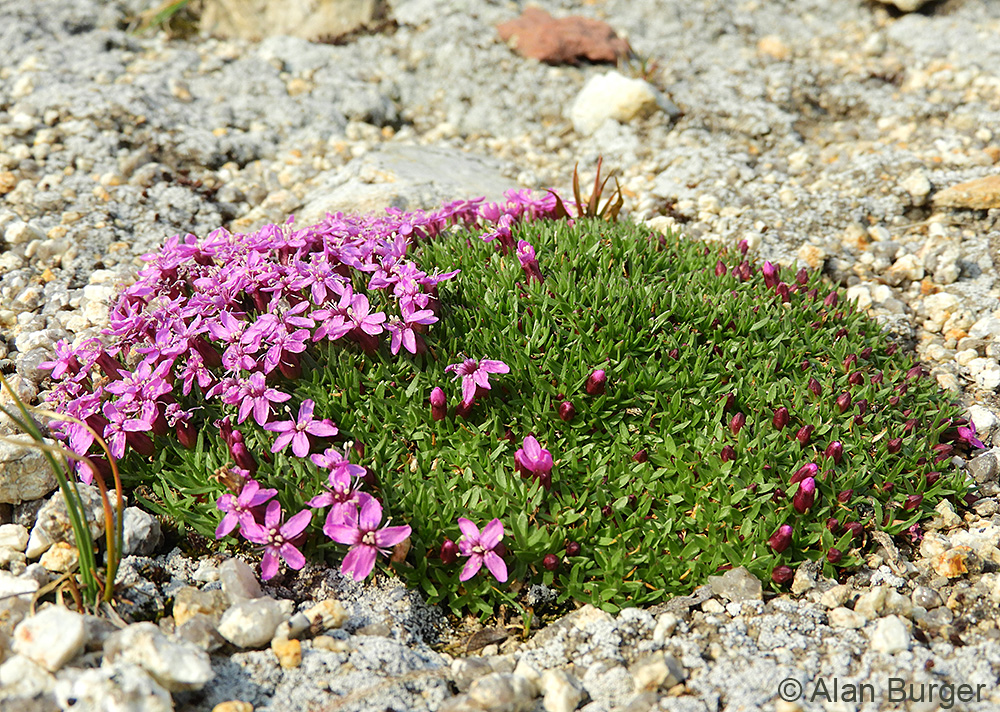
Moss Campion (Silene acaulis) is a classic high alpine cushion-plant. It is also common across the Arctic in N. America and Eurasia.
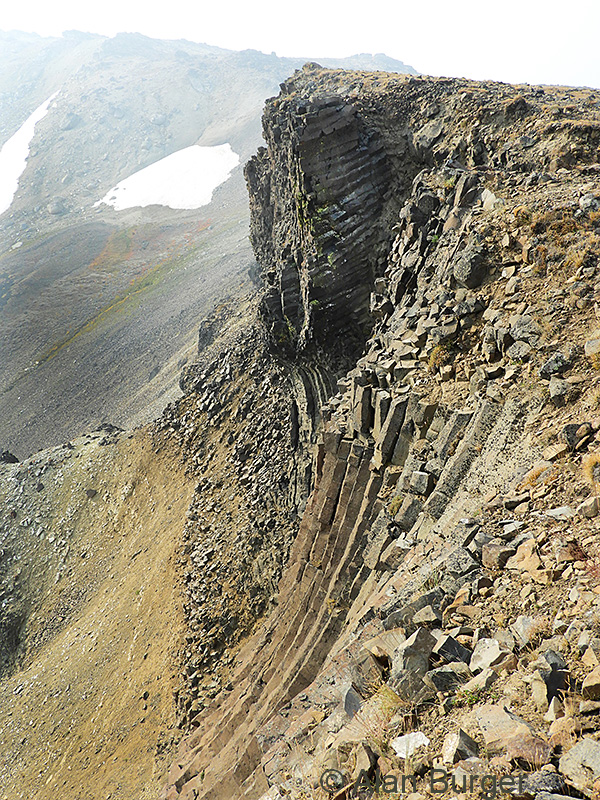
The Devil’s Woodpile – a wonderful example of columnar basalt.
Just a few hundred metres further along the trail the black volcanic basalt gives way to yellow sandstone resulting in a totally different landscape.
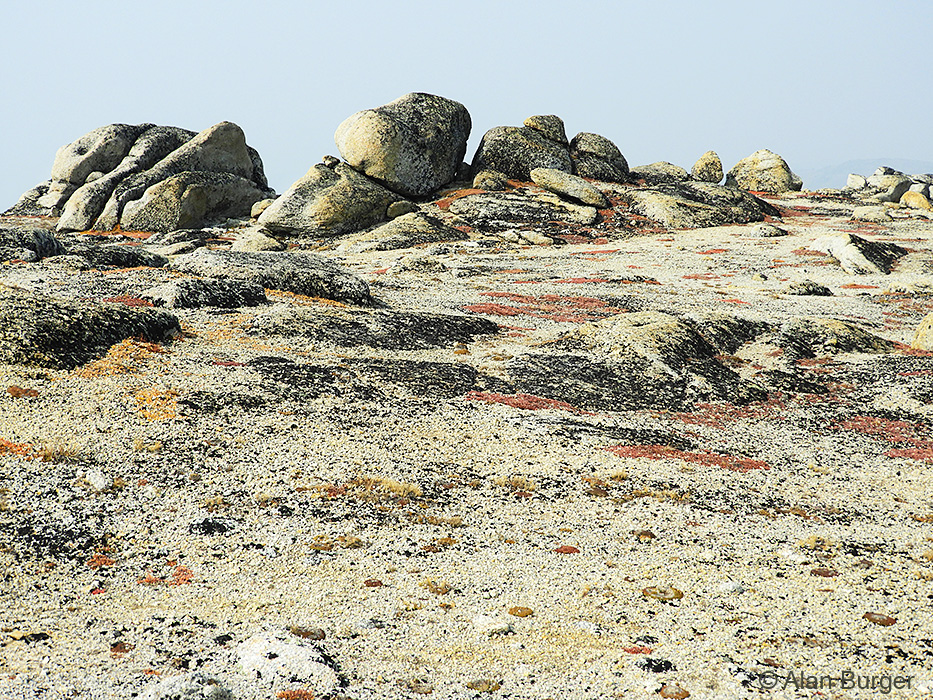
Rounded outcrops and gravelly flats are features of the sandstone areas in the Stone City portion of the Rim Trail.
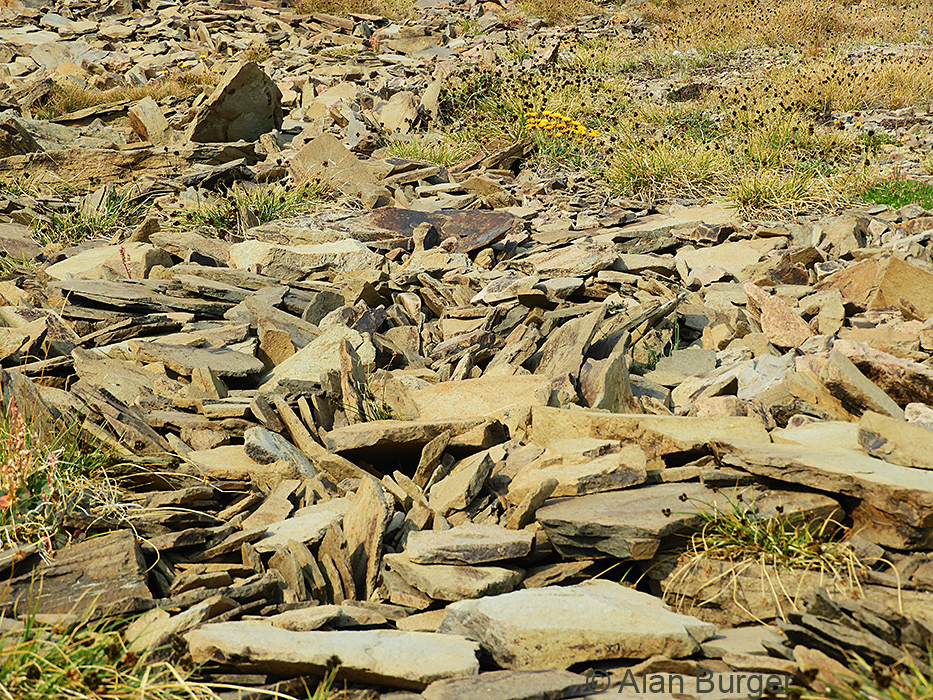
Frost shattering in the sandstone zone.
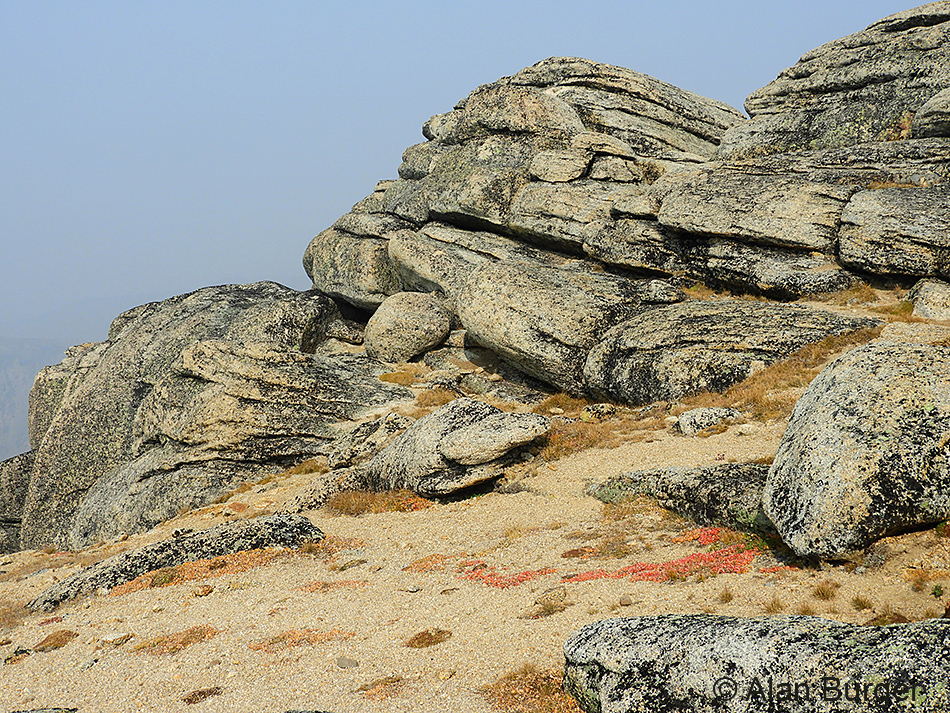
Wind, ice and snow have sculpted the sandstone into wonderful formations.
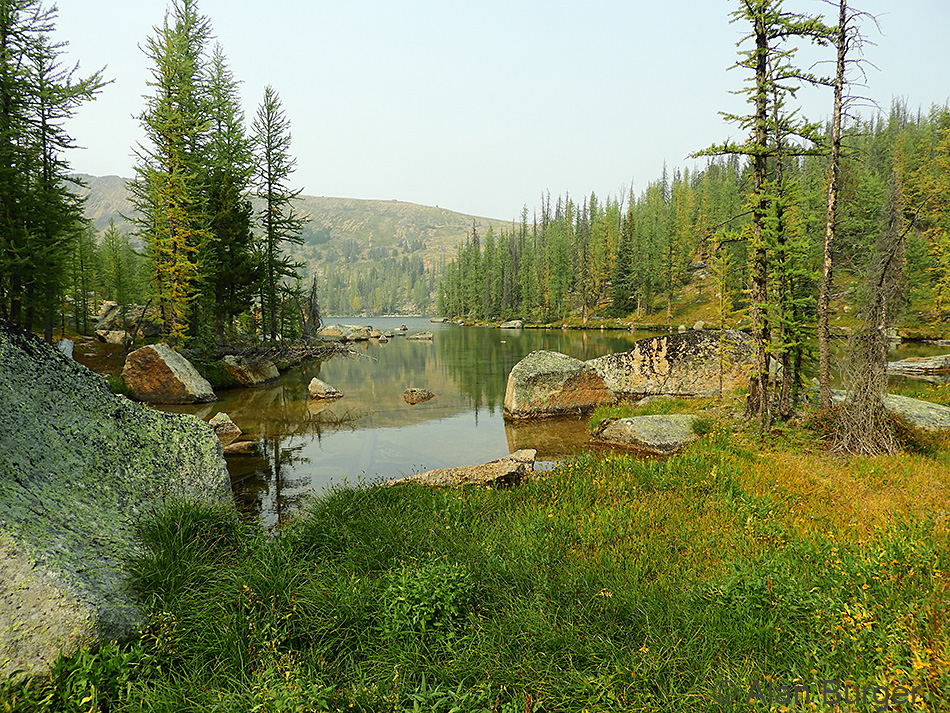
Ladyslipper Lake provides a welcome and beautiful resting place, after negotiating the slippery gravel of the Ladyslipper Trail down from the rim.
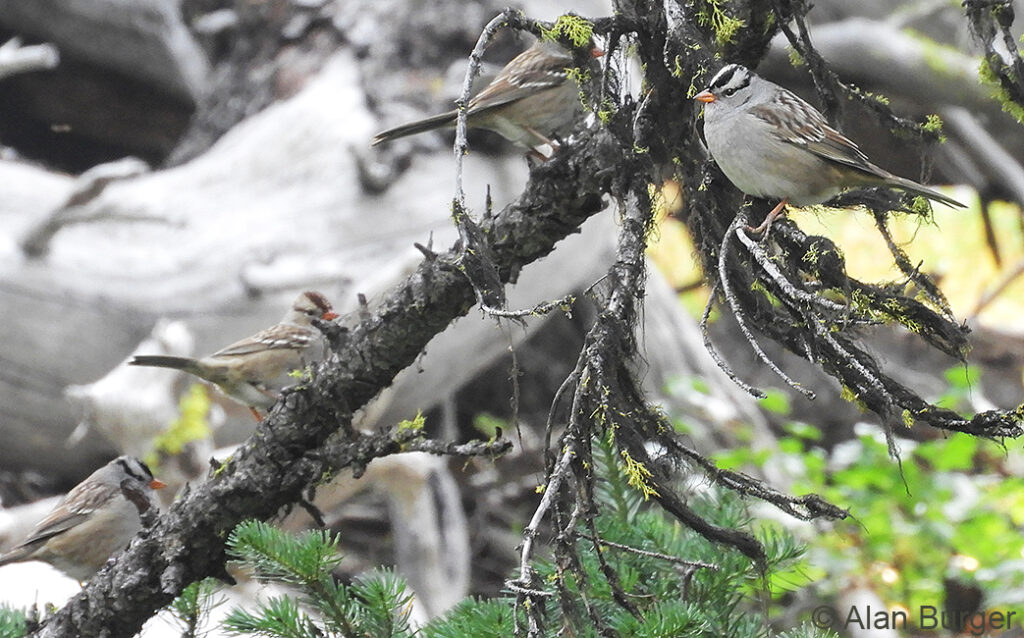
White-crowned Sparrows seemed to be everywhere – from dense forest to bare alpine. I even found one dead on the highest point of the Rim Trail. It had a head injury, likely caused by one of the resident Prairie Falcons.
On day three we paid attention to aging joints and did more modest hiking, but still in the wonderful sub-alpine area around Glacier Lake and in the spruce forests below.
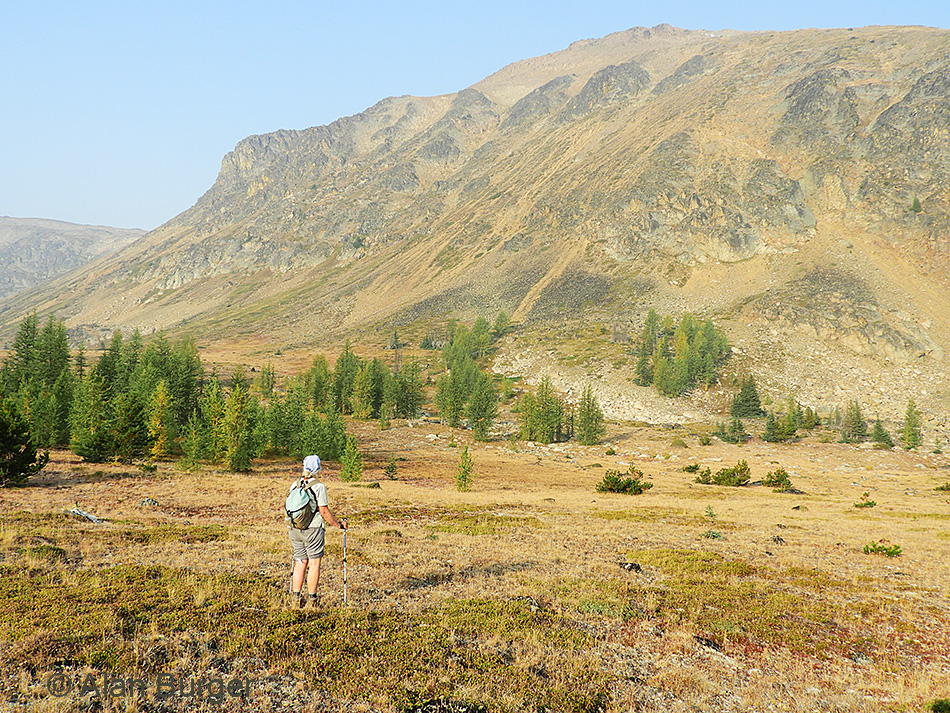
Sub-alpine meadows near Glacier Lake.
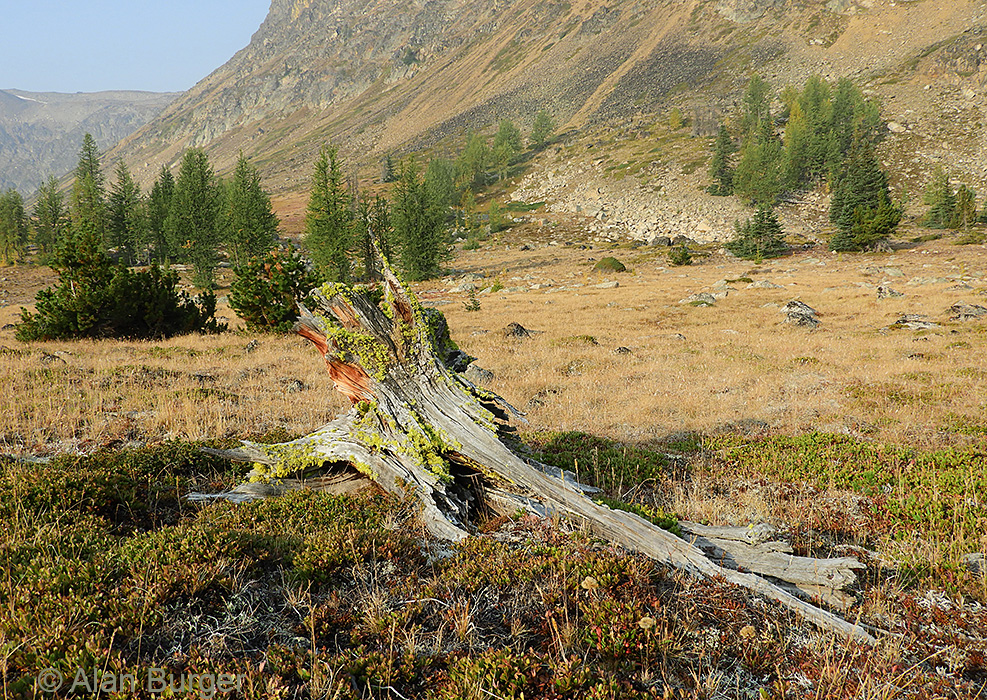
A long-dead remnant of a large conifer in the sub-alpine meadow.
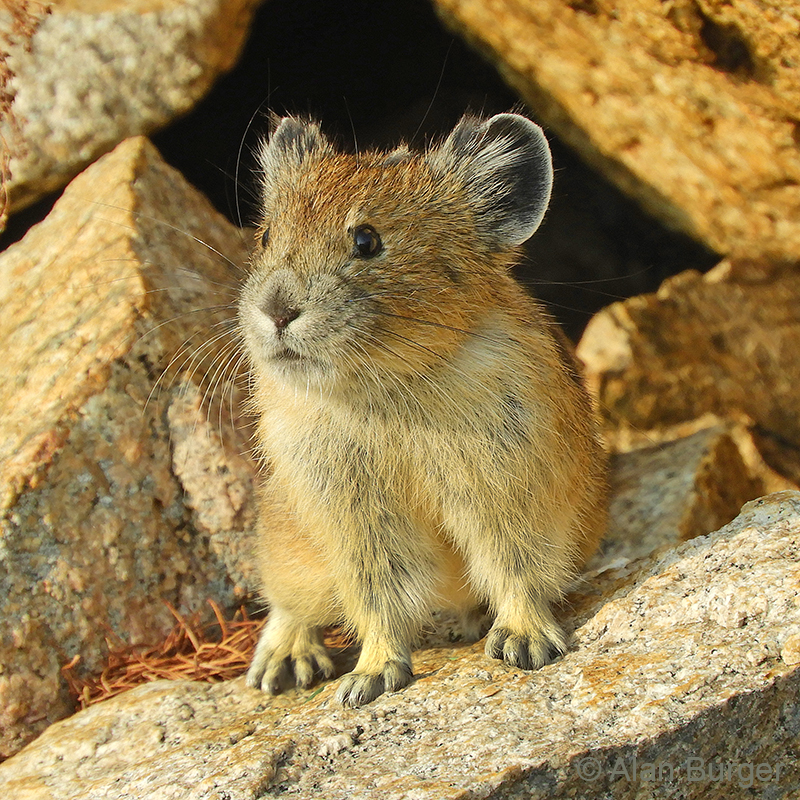
Pikas were abundant in the rocky screes at all elevations. These cute little animals, the size of guinea-pigs, are relatives of rabbits. They do not hibernate, but instead spend much of the summer collecting grass and other vegetation which they lay out on the rocks to dry . They then store this dried hay in underground rocky hideouts to keep them going all winter.
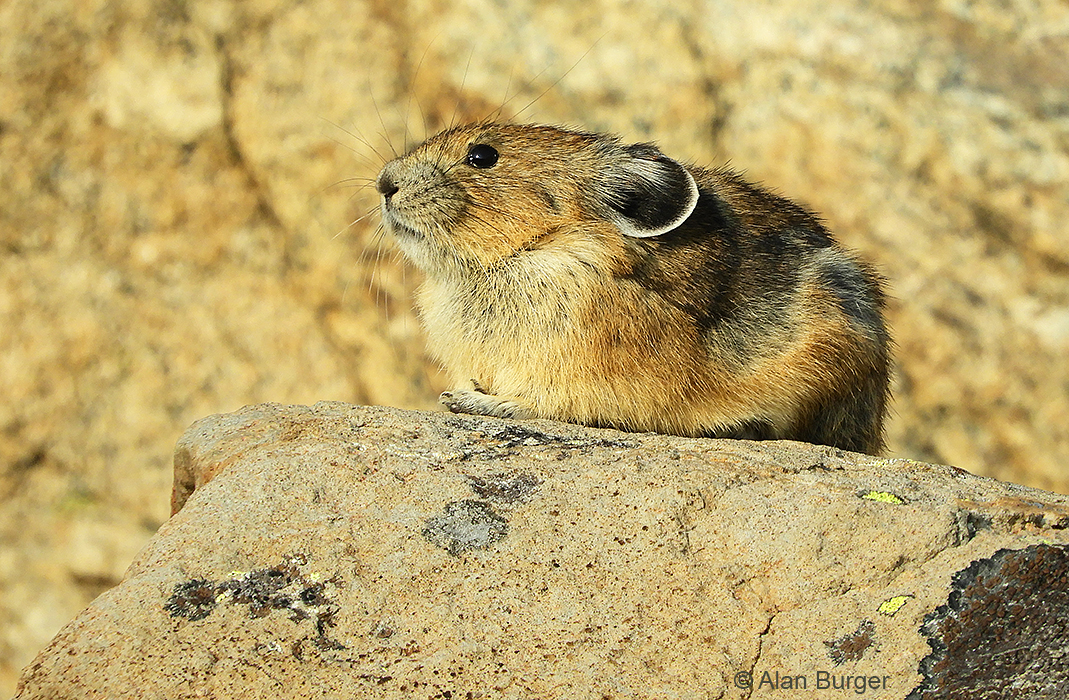
A Pika soaking up the morning sun.
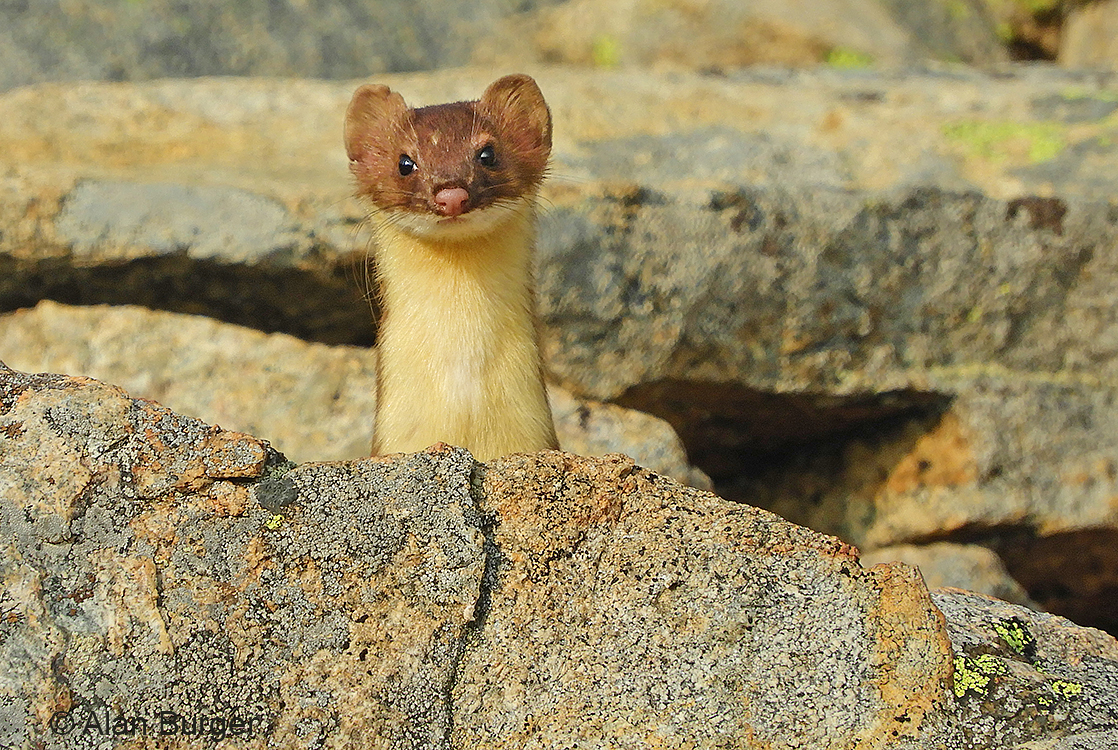
While we were watching the Pikas, this Long-tailed Weasel appeared. This vicious little predator can easily negotiate the rocky crevices in which the Pikas live, and must be a constant terror in Pikadom.
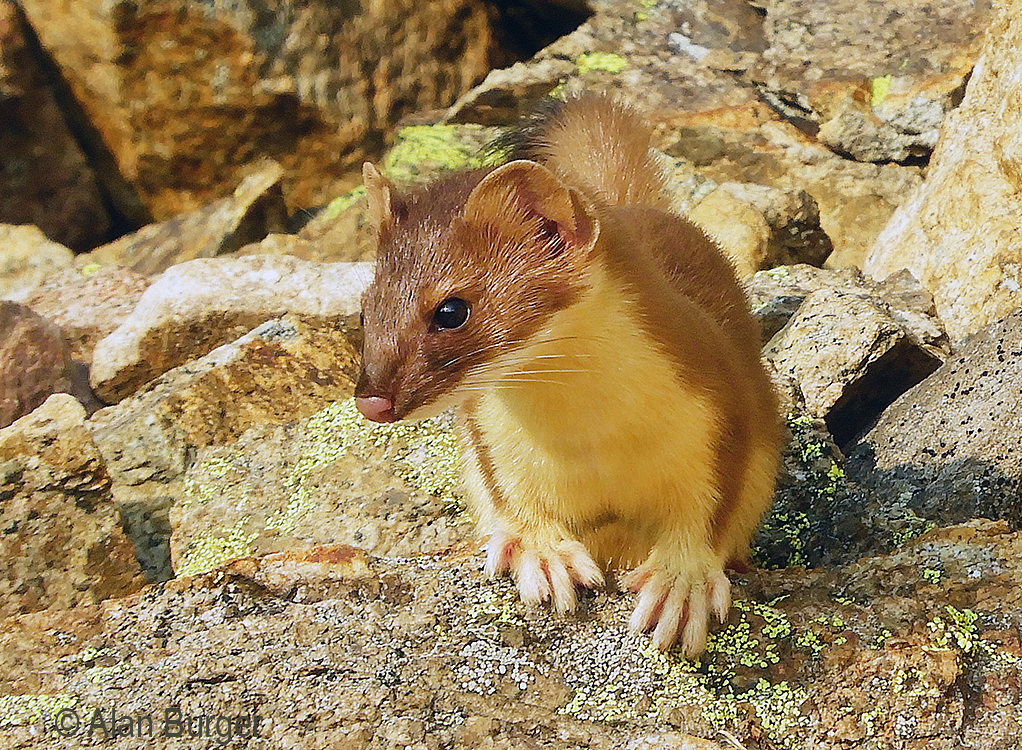
The Long-tailed Weasel was quite curious to see us and allowed a few photos.
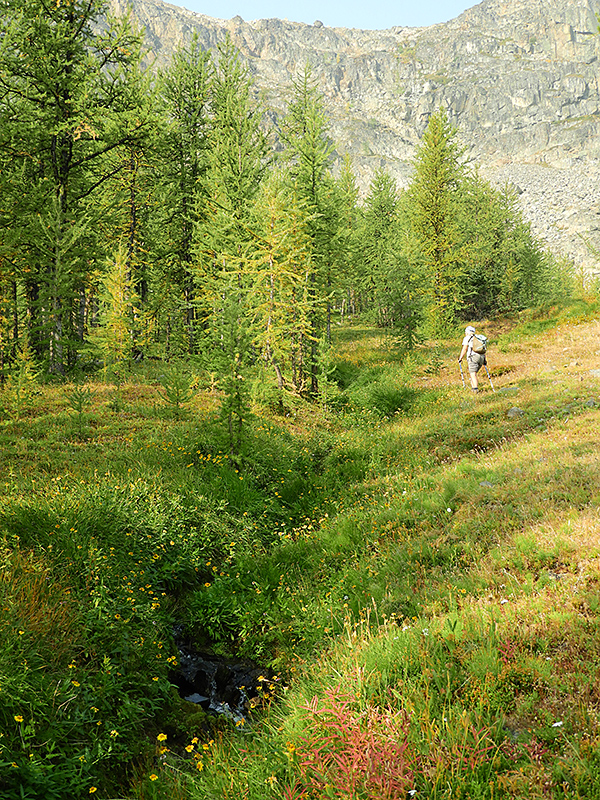
Where small creeks cut through the meadow there is lush vegetation with flowers, butterflies and many other insects.
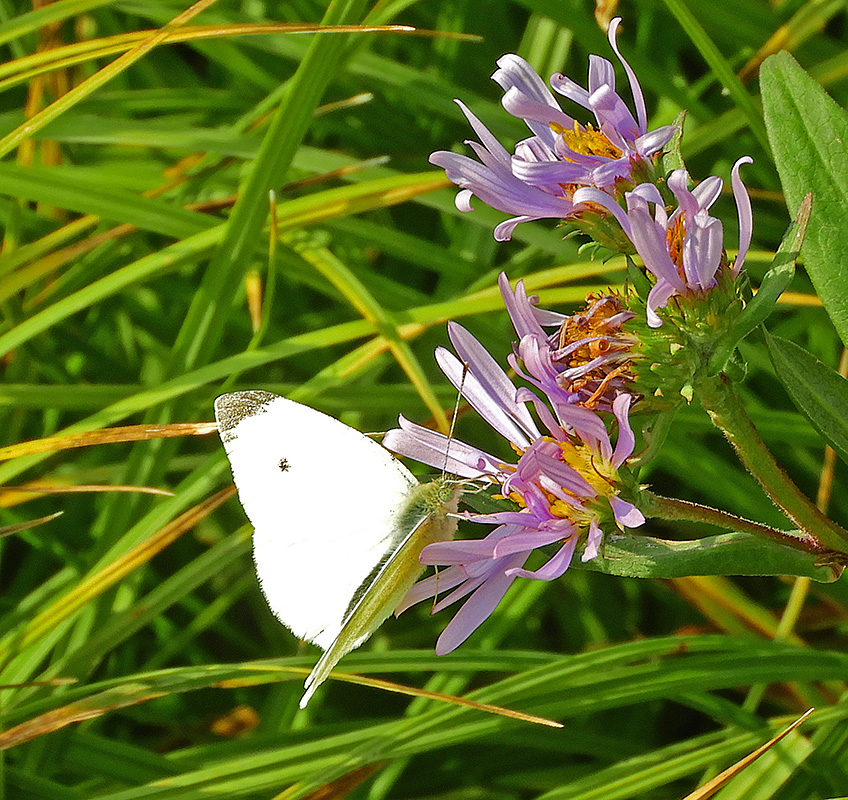
I got quite excited to follow this white butterfly, but I then discovered it was a Cabbage White (Pieris rapae), an introduced species that is common in nearly everyone’s garden. It is obviously an adaptable species to be successful in an alpine meadow.
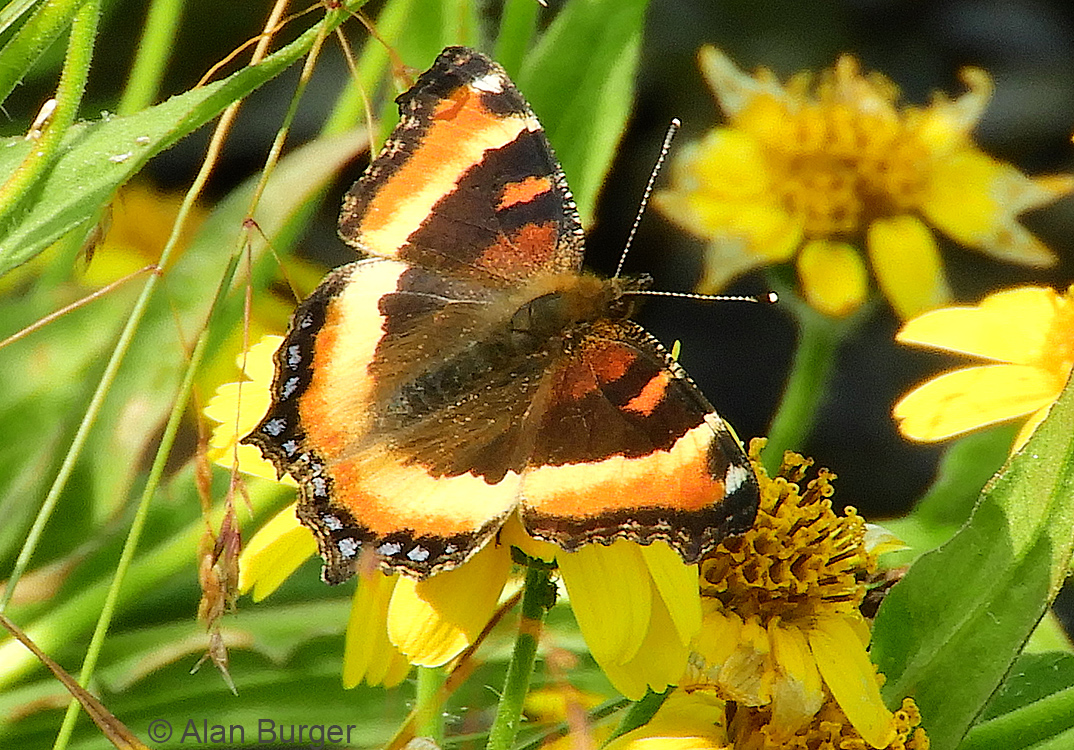
The striking Milbert’s Tortoiseshell (Aglais milberti) is a common butterfly in the moister meadows.
Mountain Goats are a regular feature of Cathedral Park. They are attracted to campsites – mainly to seek salt in the places where campers have urinated at night. There have been a few cases of goat aggression so BC Parks is urging the use of nocturnal pee-bottles (we complied). They have also put GPS tracking collars on 14 females to get a better idea of their movements and hang-outs, and are asking hikers to report sightings of all goats. Over 4 days we encountered 6 different groups of goats.
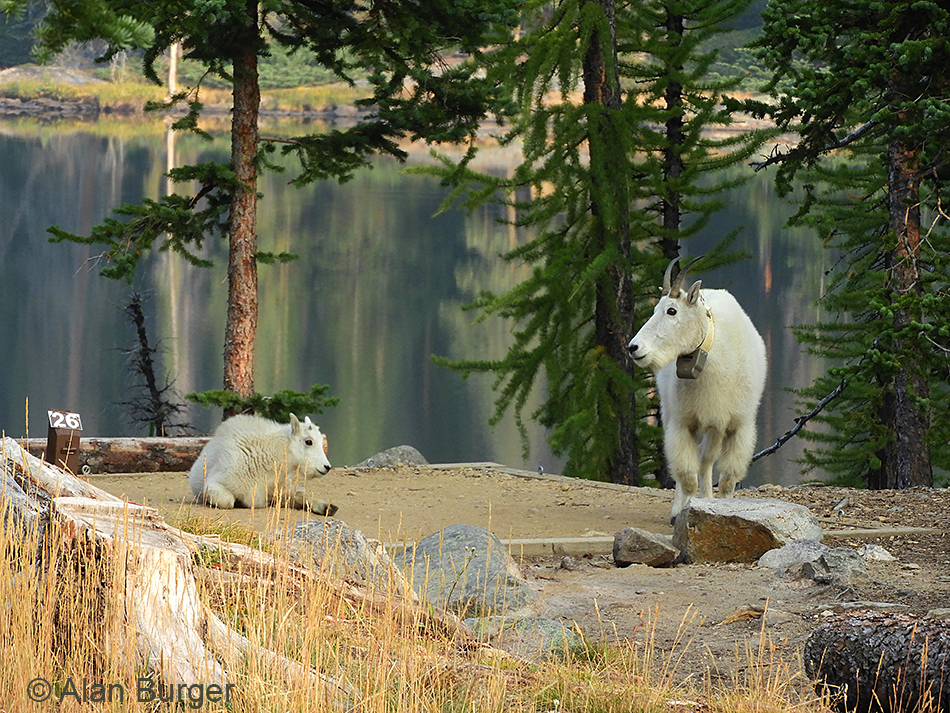
Collared female #12 and her kid visiting the Quinisco campground.
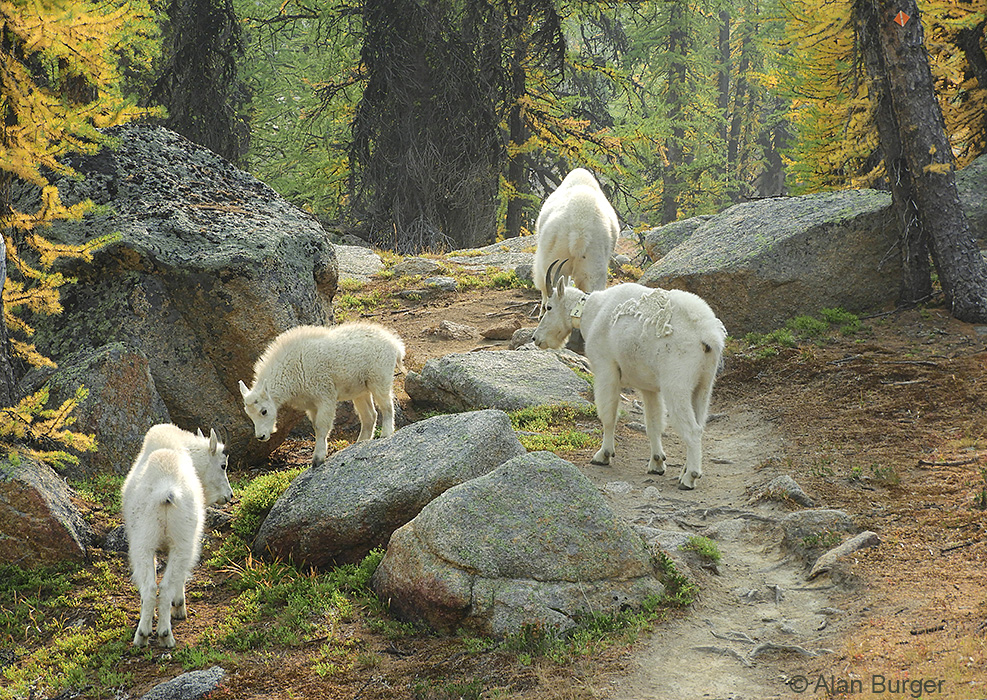
This group, led by a big male, blocked the Ladyslipper Trail for 20 minutes while they bedded down for a nap, chewed the cud, or browsed on the nearby trees.
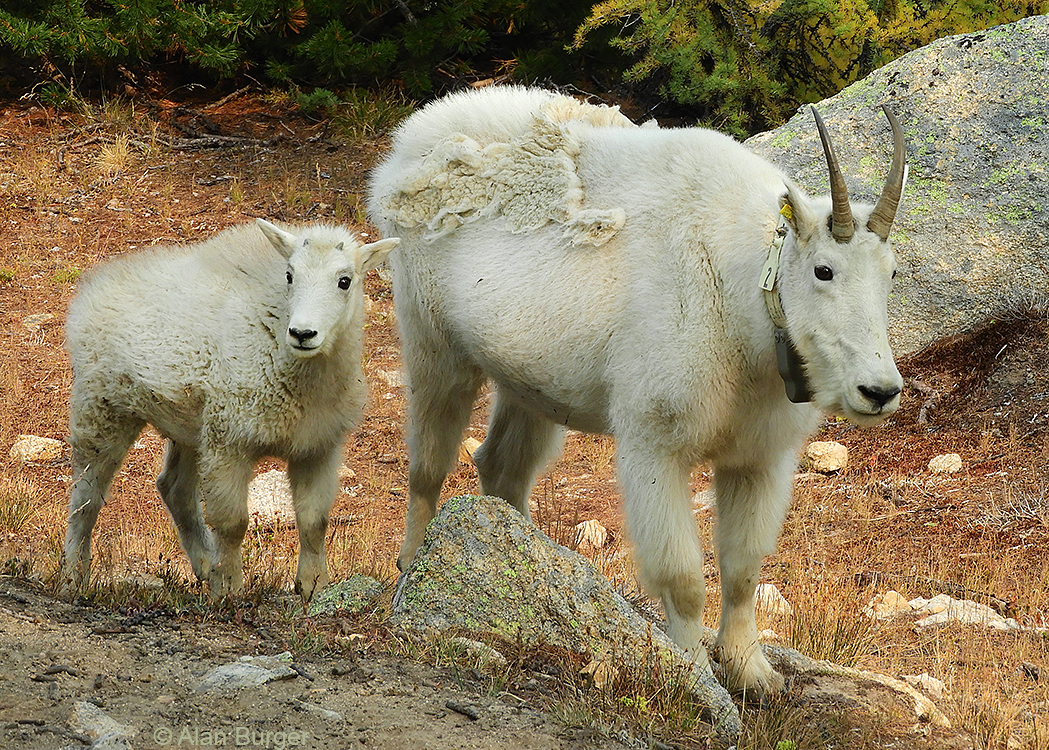
Female #2 with her young kid. Females usually give birth every second year. She still has remnants of last winter’s coat – this is shed through the summer and a new coat grown in time for the snowfall.
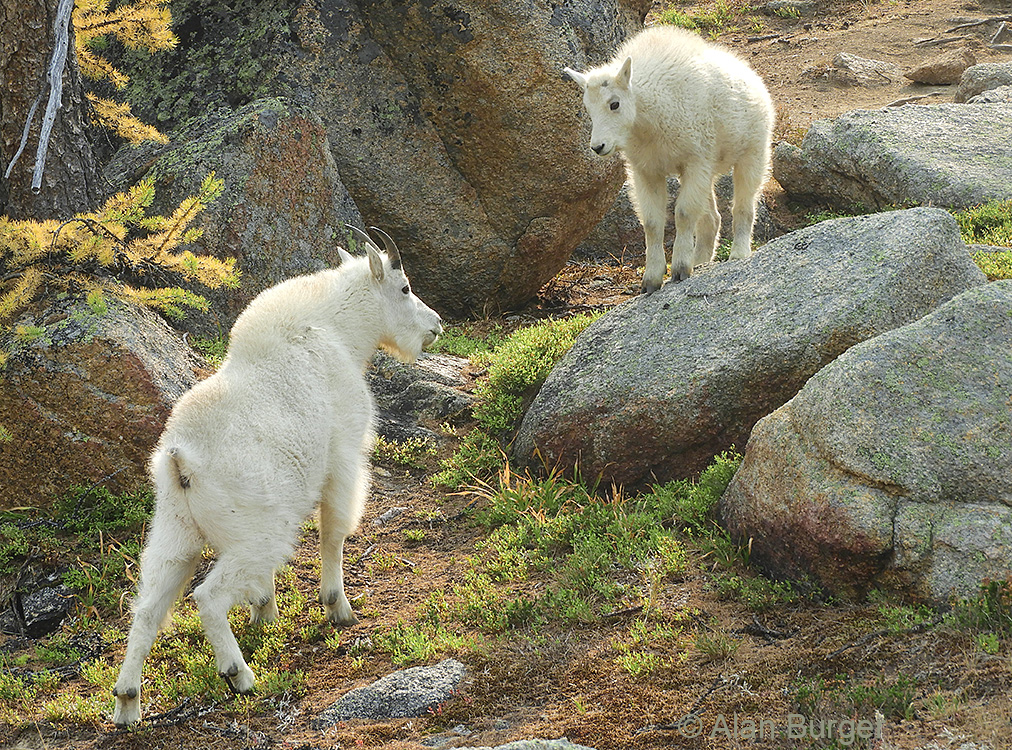
Sibling rivalry? The one on the left is an immature male (I know that because I watched him urinate) and the one on the rock is probably his younger sibling.
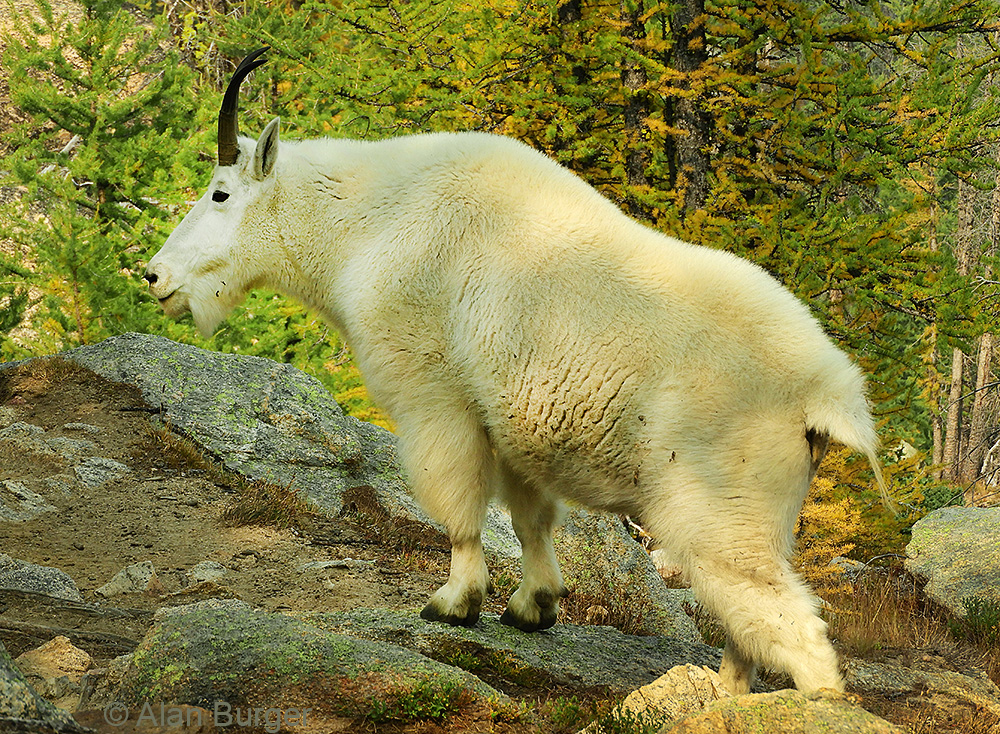
Big Billy. These muscular males can weigh well over 100 kg.
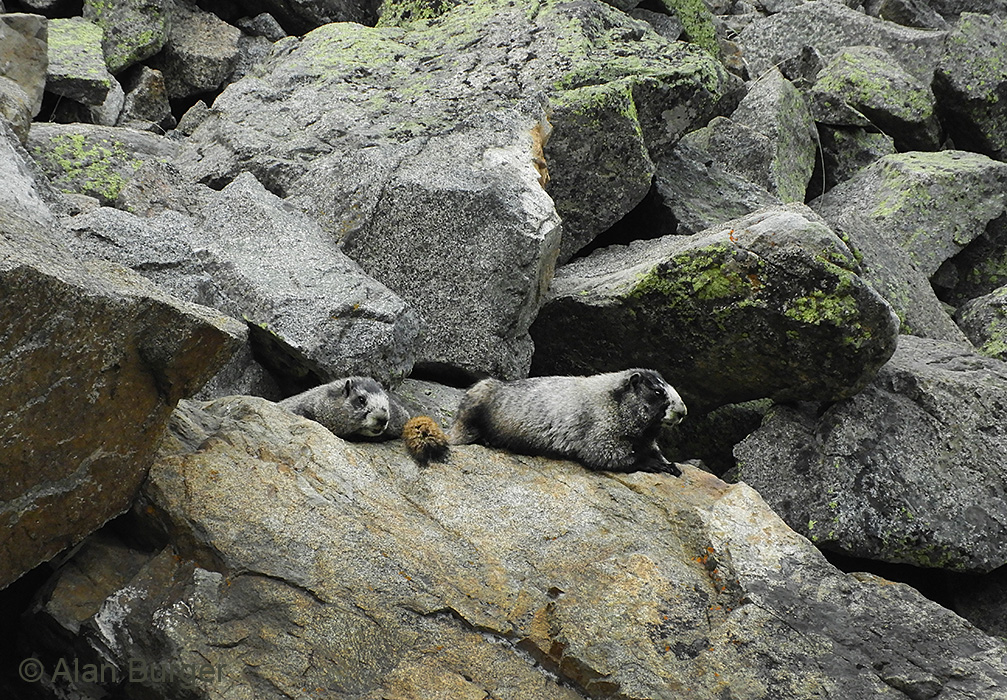
A couple of Hoary Marmots digesting their latest big meal and getting ready for a 7-month sleep.
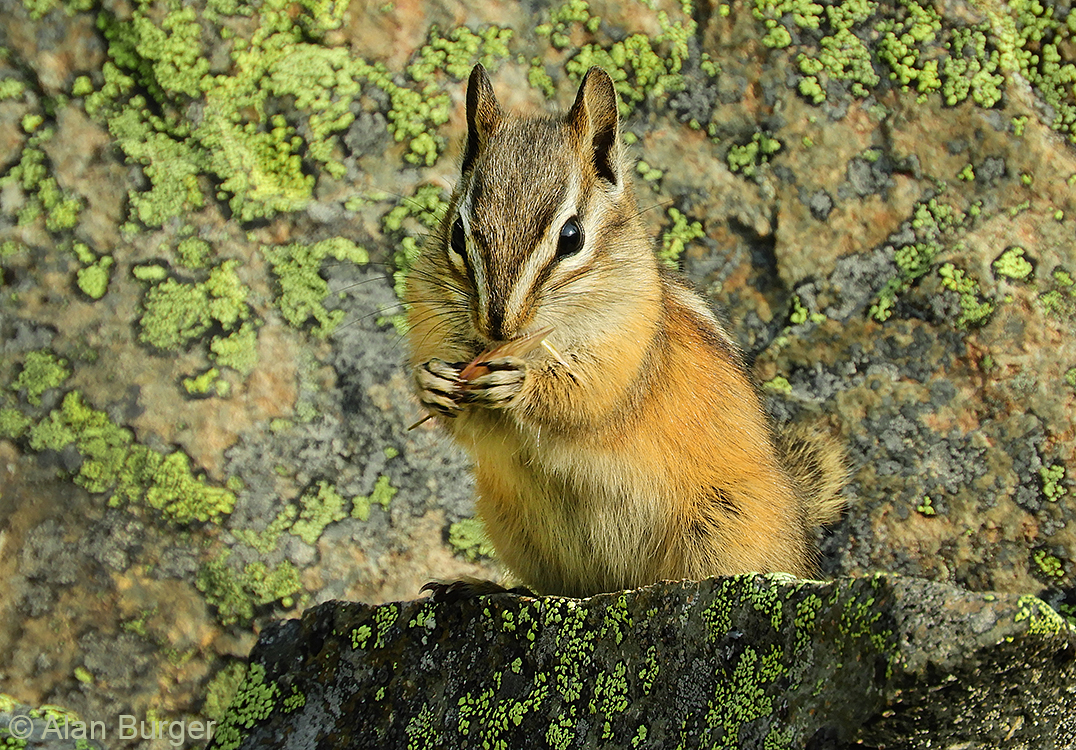
Yellow Pine Chipmunk – common in most parts of Cathedral Park, and especially around campsites.
~~~~~~~~~~~~~~~~~~~~~~~~~~~~~~~~~~~~~~~~~~~~~~~~
